












Features:
Barbara Blackburn
• Donna Phillips
Richard De Fino • Deborah Williams
Kathy Lundquist • Mike Daugherty
6 n Not All Presents Come In A Box: Make the Holidays Sparkle with Experience Gifts by Janeen Lewis
8 n 7 Free Ways to Create a Memorable Family Christmas by Rebecca Hastings

10 n Eight Enchanting Ways to Celebrate the Winter Solstice by Pam Molnar




Visit Our Web Site www.wnyfamilymagazine.com
To Reach Us: Advertising Department advertising@wnyfamilymagazine.com
Calendar Submissions calendar@wnyfamilymagazine.com
Subscriptions subscriptions@wnyfamilymagazine.com
Editorial Submissions michele@wnyfamilymagazine.com
MAILING ADDRESS: 3147 Delaware Ave., Suite B Buffalo, NY 14217 Phone: (716) 836-3486 • Fax: (716) 836-3680
PRINTED BY: Commercial Printing Division The Post-Journal, Jamestown

CIRCULATION (copies printed): 20,000
© 2022 Western New York Family, Inc. All rights reserved. Reproduction in any form without permission is strictly prohibited. Inclu sion of an advertisement does not constitute an endorsement by the publisher.
PRINT SUBSCRIPTIONS: MAILED FIRST CLASS, IN AN ENVELOPE SAME DAY ISSUE IS DELIVERED FROM THE PRINTER: $28 one year, $52 two years, $75 three years. Phone & online orders accepted with credit cards. Gift subscriptions available. Single copies & back issues by mail, $2.50.
IF YOU MOVE: Missed issues will not be re placed if we do not receive an address change before issue mailing date.
11 n You Don’t Need to Make New Year’s Resolutions by Cheryl Maguire
23 n EXPLORING
EDUCATION
A Special Pull-Out Section
• Schools are Starting to Teach Social Emotional Learning
• Social-Emotional Skills are Even More Important than Academic Skills
• Cursive Handwriting: Outdated or Relevant?
• 5 Benefits of Hands-On Learning in a Tech-Crazed World
• 25 Ways to Make Math Fun
• 10 Ways to Prepare Your Child (And You) for High School
• How to Help Your Child Choose the Right College
Directories: 15 n Gifts Galore 49 n Wellness Choices
5 n Web Finds / What’s New In The Kid Biz
12 n Pick of the Literature by Dr. Donna Phillips
20 n Family Travel Bermuda Cruise by Deborah Williams
43 n Dear Teacher by Peggy Gisler & Marge Eberts
44 n Raising Digital Kids Taking Control of Tech by Mike Daugherty
46 n Journey Into Fatherhood A Girl and Her Dino’s by Richard De Fino
47 n Parent Previews by Kirsten Hawkes
48 n Tweens and Teens Research Study Explains Ways to Improve Parent & Teen Communication by Cheryl Maguire
50 n Single Parenting The Do’s and Don’ts of Divorce During the Holiday Season by Jacqueline Newman
52 n Special Needs
My Child Has Panic Attacks. How Do I Help? by Suzanne Koup-Larsen
54 n The Kid Friendly Kitchen Spritz Cookies by Kathy Lundquist
55 n The Kiddie Gourmet Strong Hearts by Barbara Blackburn

































































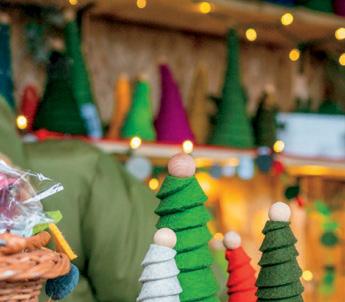















With more than 55 million sold, Rummikub is one of the world’s best-selling and most played games, from kids to senior citizens. Players take turns placing the numbered tiles of different colors in runs or groups, Rummy style. The first player to use all their tiles wins. The game reinforces STEM skills like sequencing, pattern recognition, and planning. Perfect for a group of different ages to play together; from ages 8 and up. For 2-4 players; a larger set is available for up to 8 play ers. (by Pressman, Amazon, $14.97)


In this game, each player gets a set of 6 dice in their choice of color. Roll the dice to match them to target cards, each with a point value, and be the first to win with 40 points. Packaged compactly, you can play it anywhere. Comes in a red or purple set, each for 2-4 players, or a larger set packed in a gold tin for up to 8 players.
For ages 8 and up.
(by Calliope Games, Amazon, $19.99)
The normal schedule of SAT and ACT testing for undergraduate col lege admissions was waived during the pandemic. What followed by some institutions was a “test-optional” poli cy. Now, there’s a nationwide trend to eliminate the use of SAT and ACT ex ams for admission altogether.
As of January 11, 2022, more than 1,800 colleges and universities have eliminated the SAT or ACT from their admissions requirements, according to the National Center for Fair and Open Testing.
Locally, Canisius College an nounced on November 14, 2022 that the college would adopt a test-free policy for undergraduate admissions, beginning with students applying in fall 2024. The new policy removes all consideration of standardized tests (SAT and ACT) in the evaluation of admission to the college. Canisius is the first in the Western New York re gion and one of only two Jesuit institu tions to offer test-free admissions.

In this game, wooden tiles with different shapes in different colors are used to build lines by matching the tiles based on either color or shape, and scoring points by doing so. Allows young children and older individuals alike to develop and hone spacial recognition, planning, and problem-solving skills. For 2-4 players, ages 6 and up. (by MindWare, Amazon, $24.99)

This wildly popular all-ages game was dreamed up by a 7-year-old named Alex and funded on Kickstarter. This strategic “food fight” is a smash hit with kids and adults alike, ideal for ages from 7 to 77! Takes only a few minutes to learn and play. For 2-4 players. Be sure to watch the video on Amazon! (by Taco vs. Burrito, Amazon, $19.99)
The test-free admissions policy supports Canisius’ renewed commit ment to justice. Standardized tests un fairly advantage students from higher socioeconomic backgrounds, who can afford tutors, preparation courses and other resources, and further dis advantage students from underrep resented and underfunded communi ties, as well as students with cognitive disabilities. Standardized tests can even discourage talented students from applying to college, thereby ex cluding many from the opportunity to reach their fullest potential.
Annual research by the College Board indicates the same, that high school performance is the single greatest indicator of a student’s per formance in college.
Many colleges in our region have become “test-optional.” You will find a complete list at https://fairtest.org/testoptional-list/. It should be noted that testing for graduate school programs (GRE, GMAT, MAT), law (LSAT), dental (DAT), pharmacy (PCAT), and medical schools (MCAT) are currently still required.
When you’re doing your holiday shopping, consider these family board games that are not only fun but sharpen a variety of skills — and don’t involve technology!
 — by Janeen Lewis
— by Janeen Lewis
Parents want Christmas to be magical. Sometimes this means driving all over town or frantically searching online for trendy toys or gadgets only to find that children grow bored and banish them to the back of the closet or toy box after the holidays. This Christmas, why not give your child the gift of time by pick ing out an activity you can do together? Try one of these experience-gift ideas and pair it with a related fun item to go under the tree.
Is your child a budding Van Gogh or drama queen? Here are some ideas for visual and performing arts experi ence gifts:
Experience Gifts
A membership or ticket to tour an art museum
A day at a paint-your-own pottery place
Acting classes
Parent and child painting class
Dance lessons
Tangible Gifts
The book 13 Artists Children
Should Know by Angela Wenzel
Ed Emberley’s Drawing books
An easel
A table and chair that it is okay to drip paint on
Spirograph
Paint pens, gel crayons, or oil pastels
Makeup kits for actors
Tap, jazz, or ballet shoes
Leg warmers
A costume representing a favorite character
Microphone
Does your child like to create proj ects over time? Maybe you’re a makerminded parent that wants your child to learn practical life skills. Here are some ideas to get your hobbyist started:
Experience Gifts
Knitting or crocheting classes
Home Depot free woodworking classes
Sewing classes at JoAnn Fabrics
Crafts class at Michael’s
Beginning jewelry making classes
Lessons in glasswork
Bath bomb, soap, or lotion making lessons
Knit or crochet kit for kids
The book Woodland Crochet: 12 Precious Projects to Stitch and Snuggle by Kristen Rask
Young Woodworker’s Project Kit from Lakeshore Learning (includes everything needed to build a small corner shelf, tool box and treasure chest)
Beginner Sewing Machine like the Singer Start 1304
Calligraphy Set
Origami or Craft Paper
Beads or jewelry making kit
Materials to make bath bombs, bath salts, soaps or lotions
Sports are not only a fun way for a child to get exercise, but they also pro vide an opportunity for parents to con nect to kids.
Tickets to a professional sporting event
Tour abstadium or Hall of Fame
Membership or admission to an ice or roller skating rink
Lessons with a private coach for a favorite sport
Batting facility membership
Tangible Gifts
Sports equipment
Team jerseys or hats
Ticket stub diary to hold memo rable sporting event stubs
Fitness tracker watch
Gymnastics or yoga mat
Over the door basketball hoop
You could be raising the next Pio neer Woman or Bobby Flay. Support their love of creating dishes with these fun ideas.
Cooking lessons
Kroger Chef Junior classes on Sat urdays at participating stores
Dinner at a fine dining, gourmet or culturally diverse restaurants to explore different foods
Tangible Gifts
MasterChef Junior Cooking Es sentials Set
Personalized chef apron, jacket, or hat
MindWare Playful Chef Knife Kit (it really cuts but is safe for kids)

Boys and girls both enjoy quiet conversation over a warm cup of tea.
Book a tea time at a tea room
Plant an indoor herb garden from which to make herbal tea (try chamomile, lavender and peppermint)
Tangible Gifts
Tea pot, cup

Tea cozy
Costume necklaces, hats, gloves and purse to wear to tea time


Scones and tea biscuits



















Visit a storytelling venue


Attend an author visit or book signing of your child’s favorite author

Tangible Gifts
Book ends
Booklight
E-reader, like a Kindle or Nook




Magnetic clip bookmarks
Reading tent
Comfy bean bag chair
Personalized book stamp


Magazine subscription
Clothes and accessories are always a hit at Christmas, es pecially if you have teens in the house. These ideas show your fashion lover you care about their style.

Go to a fashion show
Modeling classes
Mommy and Me mani pedis
Tangible Gifts
My First Fashion Designer by Lakeshore Learning. This kit includes a miniature dress form, cloth swatches and buttons to create runway designs.
continued on page 14

I’d like to say that December only brings cozy opportunities for family bonding and reflect ing on the meaning of the season. The reality is, however, that we are bom barded with long lists of things to do. And the list is only part of the problem. The tightened purse strings make it feel even more difficult to shower people with love.
If you’d like this coming December to be different, you can! Here are 7 ideas to show your children how much you love them without throwing out your list or digging deeper in your pockets.
This is about more than homework reading assignments. This is about time and bonding. There are few things more special than reading a book with your little (or not so little) one. Take 10 min utes, because usually, that’s about all it takes, and snuggle up. Get close, grab a blanket, and share a great Christmas story. You can find plenty at the library to enjoy together. You can even wrap a library book for a special surprise. Some of our family’s favorite books are:
★ The Littlest Angel by Charles Tazewell
★
★ Jacob’s Gift by Max Lucado
Who says picnics are just for sum mertime? Not kids!
Make some hot chocolate or some tea and put it in a thermos. Bundle up and head outside with a big blanket or two and some mugs. You don’t have to go anywhere fancy; we’ve even done this on our back deck! Just enjoy being together in the fresh air.
The kids may give you a crazy look at first, but giggles are soon to follow. For an extra special treat, try doing this under the stars.
Think about what everyday life was like when Jesus was born. Enjoy dinner by candlelight and feel how peaceful it can be to sit by the warm glow of a flick ering flame.
Kids are sure to love blowing out the candles when you’re done… so make sure to have a candle for each child!
Before you think this involves reaching for your wallet, keep reading.
My kids are almost always asking to use something that belongs to my hus band or me. Maybe it is a lip gloss or a flashlight or a tool. It could be a pretty scarf or even a special mug.
Wrap up the coveted item and give it to your child with a note reading, “This is something of Mommy’s that is usually just for me. I’d like for you to use it to day because you are special as can be.”
The holidays usually have us mixing and baking at some point. Take some ex tra time and hand over the wooden spoon.
Sure, it may take longer. Yes, it will be messier. But letting children help shows that you value their abilities and that they are more important than a stress-filled to-do list.
And I’ve never met a child (young or old) who doesn’t like to lick the spoon!
Few things evoke squeals like twin kling Christmas lights. You don’t have to make a big night of searching for lights (although that’s fun too!). Just take time to enjoy the ones you see.
Maybe take a different route home from basketball so you can see the great lights on the street you don’t usually drive on. Go a block or two out of your way to drive by the town tree.
If little ones cry, “I didn’t get to see it,” like mine sometimes do, make a quick U-turn and go back by again. You’ll only lose minutes, but it adds up to them. And the squeals are worth it!
Christmas is filled with all kinds of movies. Whether you’re looking for something funny or heartwarming, tak ing an evening and watching a Christ mas movie together is a memory worth making.
Bonding occurs when you sit to gether and enjoy a holiday movie. So don’t worry about addressing the Christ mas cards for a night. No one will re member when they got the card anyway.







A tradition of the family watch ing a Christmas movie together will be held dear for years to come. Whether it’s Buddy the Elf, Charlie Brown, or It’s A Wonderful Life, you’ll feel good know ing you took the time to be together.
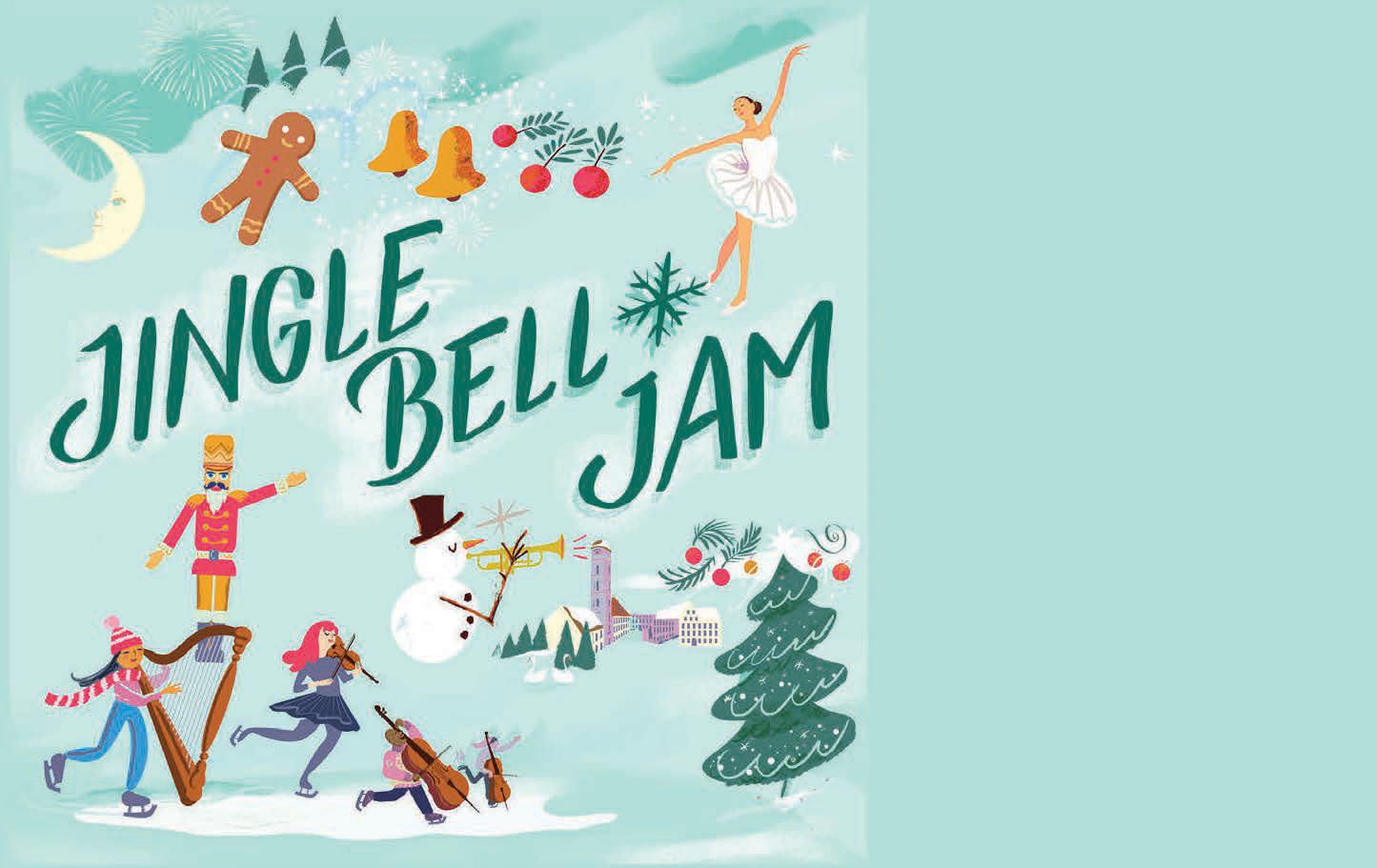

These are just a few of the ways we’ve been able to show our children love and create memorable family Christmases without spending a dime.
Rebecca is a former elementary teacher who traded the classroom for writing when she stayed home with her three children. Passionate about authentic ity, faith, and family, you can find her at RebeccaHastings.net and on Amazon. In real life, she can often be found typing words, driving her kids places, or wher ever there is chocolate.
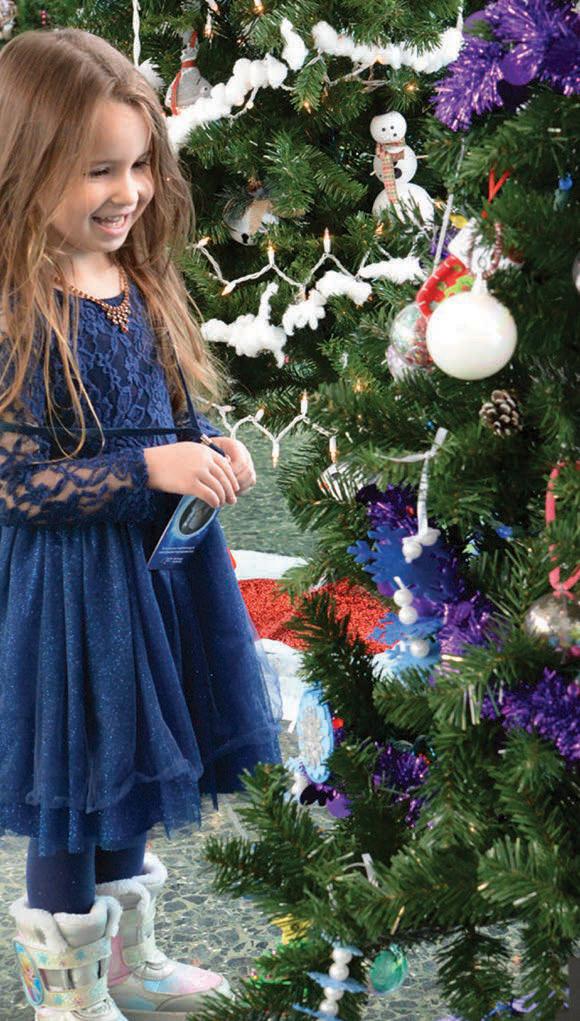
Winter Solstice is the shortest day of the year and is often referred to as the longest night. Daylight lasts only 8 hours and 46 minutes in the Northern Hemisphere and marks the beginning of the astronomical winter season. This year, the Winter Solstice occurs on December 21st.
While many dread the darker days of winter, the Solstice signifies the return of the sun with more sunlight each day. Winter is a season to embrace for what it is – a time of reflection and recharging. Just like the seasons of our life, the darker days of winter do not last forever. Brighter days always return and that is a time for celebration.
Kids will enjoy the uniqueness of eating dinner outside in the dark. Bring on the sun with a party space decorated with lit candles. Choose yellow or orange foods to add to your feast like squash, corn, gold potatoes, yellow tomatoes, and peppers. Blend up an easy frozen lemonade or make a traditional Wassail hot drink with apple cider, orange juice, cinnamon, clove, and nutmeg.
Years before the tradition of Santa Claus, people celebrated The Deer Moth er. This female reindeer flew through the darkest night, pulling the sleigh of the Sun Goddess behind her and returned home with the sun in her antlers. Cel ebrate with some festive sugar cookies you cut into deer, sun, and moon shapes or fill sugar thumbprint cookies with apricot jam or orange marmalade.




Playing games together is another way to celebrate the return of the sun and pass the time on the longest night. You
can play a reindeer antler ring toss game as a shout out to Mother Deer, head out on a winter outdoor scavenger hunt (see sidebar) or play board games like Don’t Break the Ice or Ticket to Ride Nordic Countries. Winter card games options include Nordic Casino, a card game for 2-4 players or Spot it! Winter Wonderland.
Another Winter Solstice tradition includes making orange pomanders, which are oranges or tangerines spiked with cloves and hung as a seasonal decoration. To share with friends, place the pomanders in a bag with cinnamon sticks and fresh cranberries. Include a decorative tag with instructions to cut the pomander in quarters, add water, and put in a pot or crock pot to simmer. The smell is amazing.
Food is scarce for backyard birds during the winter months, so think about creating suet bird feeders with lard, peanut butter, and seeds. You can also make fruit garland by stringing grapes, orange slices, and apple chunks to hang from the trees. It makes a nice decoration as well as being a food source for the birds. Don’t for get to leave out water for birds and other animals to drink from. Check it daily for ice and refill as needed.
Find a piece of firewood that will fit in your outdoor fire pit. (This might be too messy for your indoor fireplace.) Wrap it with raffia ribbon and gently tuck in pieces of holly, pine needles, pinecones, and cinnamon sticks. En courage the family to use small pieces of paper to write something they would like to change in the upcoming year as well as any goals, dreams, or plans for the new year. Place the papers on top of the log or tuck them into raffia. These will serve as kindling to start the fire.
Winter Solstice crafts include sun catchers, paper luminaries, and ice lanterns to celebrate the return of the sun. Nature crowns are another option for your Winter Solstice celebration. Gather twigs, small pinecones, ever green branches, and red winter berries to fashion together in a circle and wear on your head. You can also make nature salt dough ornaments with the same natural materials pressed into them to decorate the bare trees until spring arrives.
Winter bucket lists don’t have to center around activities in the cold and snow. Instead, write down the places you want to go like museums or to see a new movie that is coming out. Look up new recipes you want to try. Find class es that teach a new hobby you have wanted to start. Reach out to people you want to connect to after the holi days are over and plan an outing. In other words, have fun!
Pam Molnar is an avid party planner and mother of three. She enjoys writing about celebrations of every kind.
Find these items outside. Gather what you can and take pictures of the rest. Happy Hunting!
A lost mitten or glove
It’s January 14, 2022. People are filtering into the cycle room at the YMCA. I’m adjusting the seat on my stationary bicycle when I real ize the class is almost full twenty minutes before it even starts (which is unusual).
The woman next to me, who regu larly attends the class grumbles, “I hate this time of year when all the ‘resis’ take over the gym.”
Since I’m also a regular, I know her term “resis” is referring to all the people who newly signed up for a gym membership in hopes of fulfilling their New Year’s Resolution of working out. Every January for the past 15 years that I’ve been a member of the gym, I’ve wit nessed this phenomenon.
I turn to her and say, “Don’t worry, they will all be gone by March.”
She laughs and says, “That is so true.”
Even though I made light of the situ ation, I feel sad knowing all of these peo ple will not achieve the goal they created. Unfortunately, this is a common occur rence. Richard Wiseman studied 3,000 people who created different New Year’s Resolutions. At the end of the year, he found only 12% of the people achieved their intended goal.
Despite the high number of failed goals, about 40% of Americans continue
to create New Year’s Resolutions. This tradition dates back to Roman times as a way to honor the mythical god Janus.


According to psychology profes sor Peter Herman, people usually don’t achieve their New Year’s Resolution goals due to the fact they create unreal istic goals. People also tend to underes timate the difficulty in achieving these goals.
I wasn’t always a fitness fanatic. In fact, I would liken my former self to more of a couch potato who avoided all forms of exercise. My transformation was a long and slow process (over the course of several years) and it never involved a New Year’s Resolution of working out.
I think creating a goal just because the calendar (or other people) are telling you to will only set you up for failure which could result in a decreased selfworth. Instead of setting a New Year’s Resolution because it’s a new year, cre ate goals throughout the year for areas in your life you want to change.
When creating goals it’s important to be realistic. For example, if you want to
run a marathon (26.2 miles) you would need to train for it first. This training usu ally involves running short distances and then building up to longer amounts of running. This technique could be applied to any goal you create. In relation to your goal being realistic, it might not be physi cally possible for you to run a marathon so to create this as a goal without first understanding your own physical limita tions would result in not completing it.
Instead of creating New Year’s Res olutions, try taking some time to assess your accomplishments and other areas of your life over the past year. Here are some questions to consider to help you with this process:
1) What did I accomplish this past year?
2) How can I build upon those accom plishments next year?
3) What are some things I could have done differently this past year?
4) List some people who were supportive of me this past year.
5) How can I support other people next year?
6) When I think about this past year, I feel happy to remember . . .
7) When I think about this past year, I feel sad to re member . . .
8) What are some new skills or information I learned this year?
9) What are some new skills I would like to learn in the future?
10) What steps do I need to take to achieve new skills or accomplishments?
After reflecting on these questions, consider how you would like to move forward with the New Year. If you do decide to create goals make sure it is re alistic for both your expectations and the reality of achieving them.
Cheryl Maguire holds a Master of Coun seling Psychology degree. She is married and is the mother of twins and a daugh ter. Her writing has been published in The New York Times, The Washington Post, Parents Magazine, AARP, Health line, Your Teen Magazine and many other publications.
December is the time of plenty and celebration just before we go into the quiet months of winter contempla tion. Making plans for dinners, par ties, presents, and get-togethers is all part of the fun. But for some, this time can be overwhelming and exhausting physically, mentally, and emotionally. This is when we need to take a bit of time to step away from it all and take a walk outdoors or read a good book. And speaking of books…
There are so many outstanding books for this holiday season that I have decided to take you on a trip through the bookstore and share a list of my favorite titles.

Crinkle Bells (Chronicle Kids, New York, 2022, $8.99) written and illustrated by Jay Fleck. This is a delightful board book for little hands and ears! The rhyming story of the little bells and the crinkly pa per will certainly engage them.
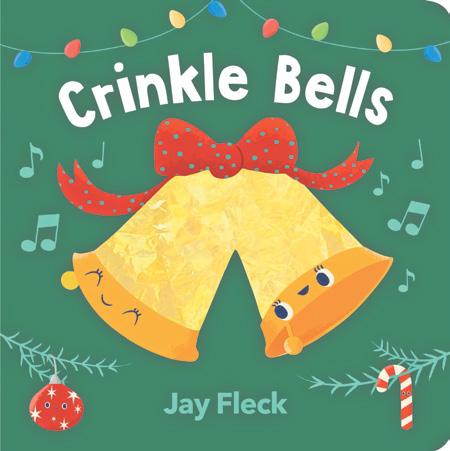
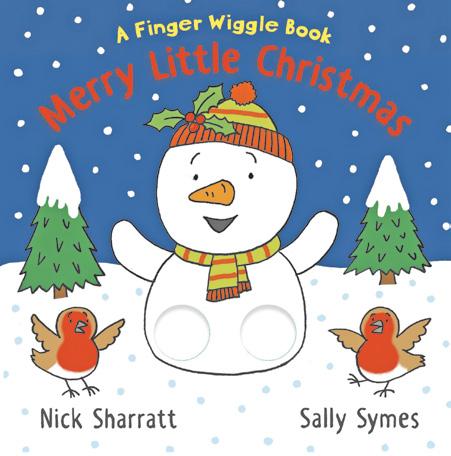
Merry Little Christmas (Candlewick Press, Somerville, 2022, $9.99) written by Sally Symes and illustrated by Nick Sharratt. Little fingers will love to wiggle their way through this board book as hear the story of the holiday characters and let their fingers to the walking!



If You Met Santa (Random House Children’s Books, New York, 2022, $7.99) written and illustrated by Holly Hatam. What does Santa do in the off-season? This colorfully illus trated board book with take you into his house and his daily activities. Yes, Santa does do more than make toys and deliver them!
Countdown to Christmas (Gibbs Smith, Layton, 2022, $12.99) written and illustrated by Greg Pap rocki. This fun “counting down” book will take us all over town and out into the country looking for holiday things to count. Wonderful details and engaging scenes will delight all!
Hanukkah, Here I Come! (Grosset & Dunlap, New York, 2022, $5.99) written by J. D. Steinburg and illustrated by Sara



Palacios. All of the fun friend and family activities of Hanukkah are cel ebrated in short rhyming vignettes and colorful illustrations. Stickers allow little hands to interact with the pages.
The Merry Christmas Mittens (Brown Books for Kids, Dallas, 2022, $17.99) written by Sarah Janco and il lustrated by Blayne Fox. Follow the adventure of a pair of mittens that get lost and found throughout this story. With each new owner we learn a bit about who they are, and where they live, and how they celebrate holidays. And yes… in the end Santa delivers them to the original owners!
Through the North Pole Snow (Candlewick Press, Somerville, 2022, $18.99) written by Polly Faber and il lustrated by Richard Jones. A little white fox is befriended by a kind, bearded man one snowy evening. They soon become fast friends and the little white fox is always by the side of this kind man as he hammers and saws, making wonderful things. Now Santa has a friend to accompany him on this magical flight to deliver all the toys they made!
A Very Mercy Christmas (Candlewick Press, Somerville, 2022, $18.99) written by Kate Di Camillo and illustrated by Chris Van Dusen. As Stella searches the neigh borhood for friends to go caroling with her, she come across some very unlikely characters. Can you imagine seeing a pig, a horse, and a cat singing outside your door? In the end, friends and family join in and all are reunited in song and celebration.
The Twelve Cats of Christmas (Chronicle Books, San Francisco, 2022, $15.99) written by Feather Flores and illustrated by Carrie Liao. Romp through the frenzy and fun of these delightful cats and how they celebrate and upset the home for the holiday. Any cat lover will enjoy these antics and perhaps even see a bit of their cat in the richly illustrated scenes.
The Night Before the Nut cracker (Random House Chil dren’s Books, New York, 2022, $18,99) written by John Robert Allman and illustrated by Juli anna Swaney. This story follows the lives of the young dancers as they train and practice to perform in the Nutcracker ballet. Excite ment builds until the evening of the performance and the celebra tion to follow. This is the perfect book for anyone who has ever danced, or wanted to dance, in this beloved holiday tradition.
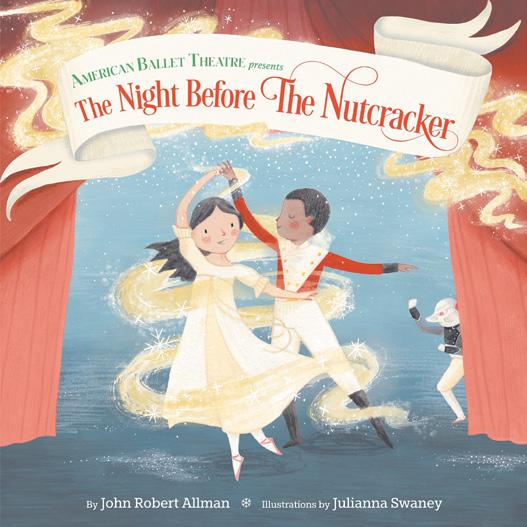







‘Twas the Night Be fore Christmas (Candle wick Press, Somerville, 2022, $17.99) written by Clement C. Moore and illustrated by Matt Taveres. Everyone knows this beloved classic Christmas tale but few can illustrate it like Matt Taveres. His haunting use of perspective and detail add even more magic to this annual holiday adventure.
Clarice Bean: Think Like an Elf (Candlewick Press, Somer ville, 2022, $19.99) written and illustrated by Lauren Child. Cla rice Beane is the perfect person to celebrate the holiday season with. Her sparking personality and her creative mind are just what is needed. Full of all the mishaps and misunderstandings you would expect from this chapter book, it is perfect to read to yourself or share with the whole family.

Why not plan a family trip to your local bookstore and look for these books or others that may call out to you? Experience the books and savor the smells, feel, and sights of a fresh book. Perhaps your bookstore has tea, coffee, or hot chocolate for you to enjoy as you read or peruse the shelves. There is the perfect book for everyone on your list! You might even find some books to put on your holiday wish list!
Dr. Donna Phillips is an associate professor in the College of Education at Niagara University where her specialty is literacy and children’s literature. She lives on Grand Island, NY and is the mother of two adult children and the grandmother of one.
A mix and match fashion drawing set like Fashion Plates
A chic hat, scarf, gloves, or ear muffs
Leather boots & Graphic tees
Designer watch
Faux Fur accessories
Animal print scarf or leggings
FabKids subscription box
Gift card to favorite clothing store





















Help your child find their inner interior designer with these gift ideas.
Experience Gifts
Consult with a local interior decorator and use your child’s ideas to design his or her bedroom or playroom makeover


Tangible Gifts
Klutz Design Your Dream Room. This portfolio lets your child explore with patterns, color, space, and 300 punchout pieces to design a room.

Paint for a bedroom or playroom picked out by your child
Sheets, bedspread, curtains or designer pillows
Lamps, desk set, or wall art

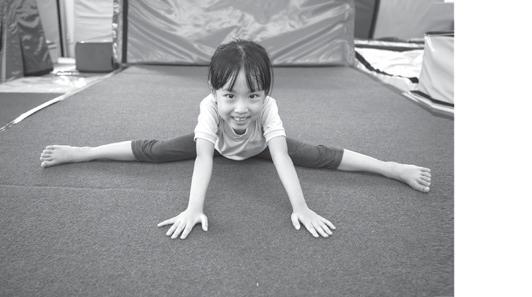

If your child loves STEAM (Science, Technology, Engineer ing, Art and Math), you can find a plethora of classes and camps.
Experience Gifts
Engineering Class

Membership at a nature center
Membership to a children’s museum Computer camp or classes

Science subscription boxes like Groovy Lab in a Box and Microscope / Telescope Lego Master Builders Academy
Janeen Lewis is freelance journalist and mother of two. She has been published in several parenting publications across the country and in Chicken Soup for the Soul: Christmas Magic.

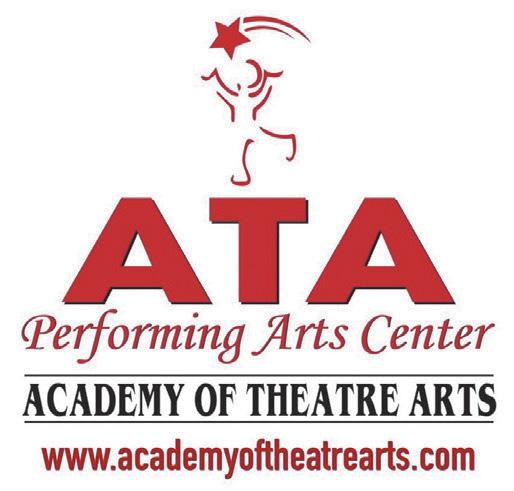
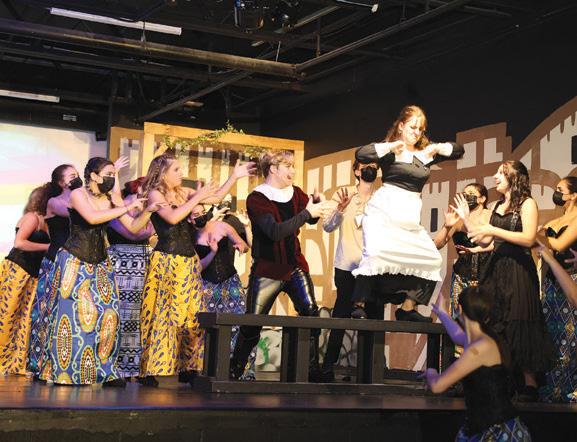




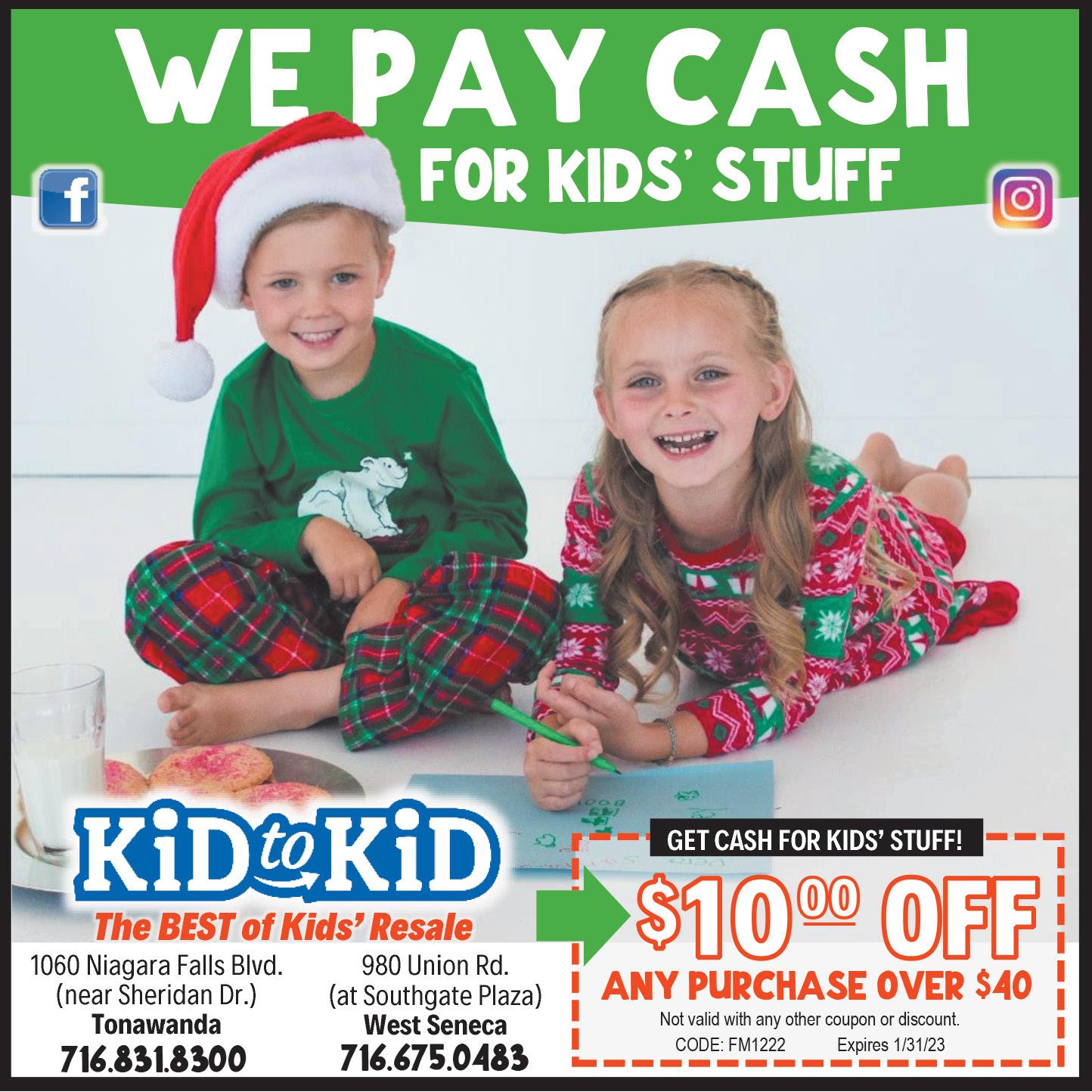









716-390-8347 www.716MusicAndMore.com
Music Together is the world-re nowned early childhood music and movement program for children birth through age 8 and the grownups who love them. This incredible cur riculum has been offered for over 30 years and is loved by families around the world. Ongoing research guar antees a high quality, educational and fun experience in our classroom at Harlem Road Community Center. Join our musical community and make musical memories with us! Tu ition includes weekly classes, CD and digital downloads, illustrated song book, and online access to videos, activity pages and more! Gift certifi cates available.
4231 Transit Rd, Buffalo 716-810-0551 www.academyoftheatrearts.com
As 2022 award winners of NYS Theatre Guide’s “Best Theatre Edu cation Program for Young Artists”, we are proud to use theatre as a platform to teach and promote ex cellence in public speaking, selfesteem, confidence, and personal excellence to a generation who now needs these skills more than ever before! ATA offers classes in acting, singing, dancing, private voice, competitive musical theatre compa nies and a variety of summer camps. For a complete list of classes visit www.academyoftheatrearts.com. Become a part of our theatre family and give the gift of theatre lessons this Holiday season!
138 Grey Street, East Aurora • 716-655-4456 • www.designingdish.com
Everyone is an artist at Designing Dish – a paint your own pottery store featuring Glass Fusing. New to our exciting menu of mediums: Glass Etching. Create one-of-a-kind make and take gifts from wine glasses to ornaments. We have those special projects that everyone will always remember. Open for walk-ins, birthday parties, ladies nights, and accepting reservations for private parties. Celebrate the Holiday Season by visiting us in the historic village of East Aurora. Follow us on Facebook and Instagram.

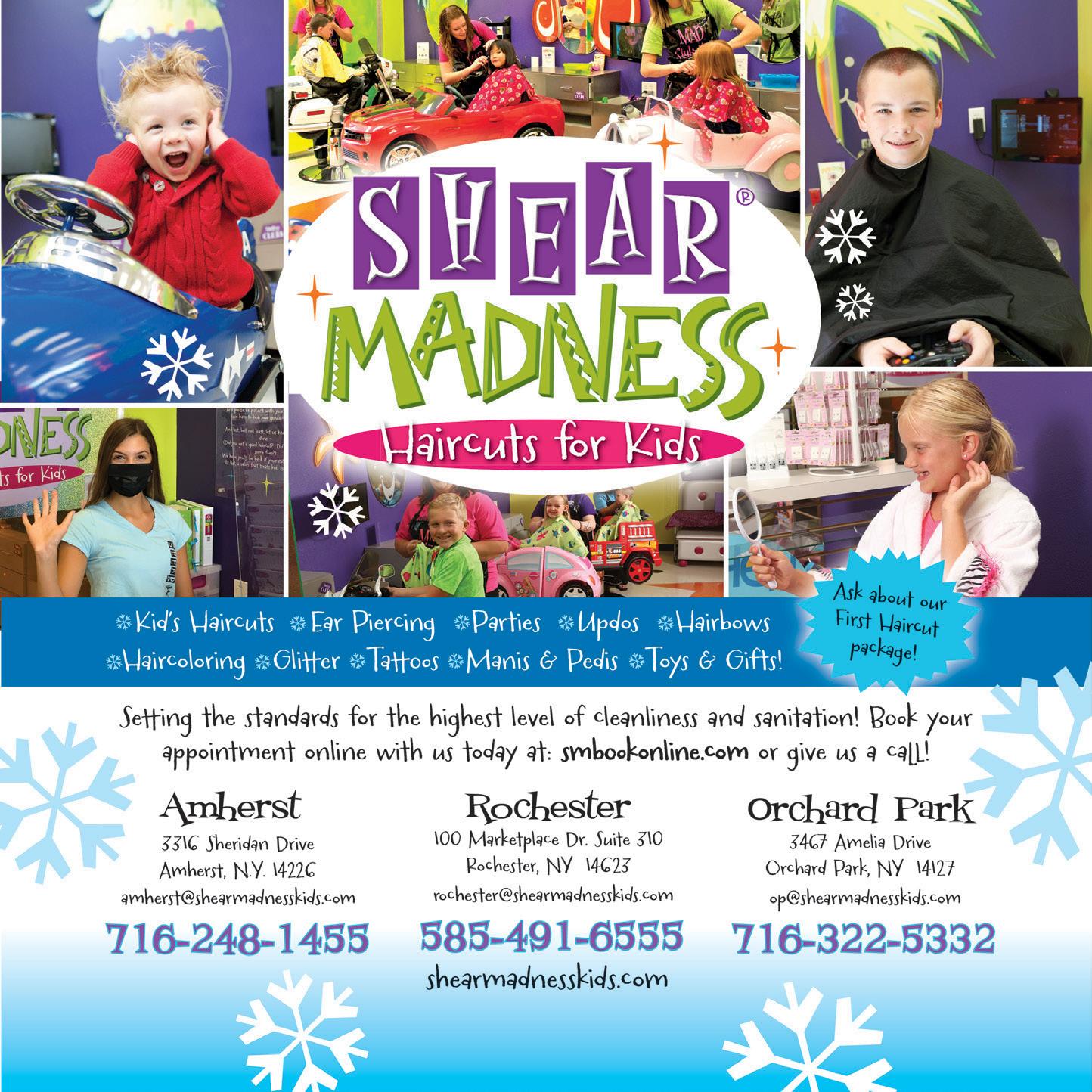
5225 Main St., Williamsville • 716-633-1966 1396 Hertel Ave., Buffalo • 716-939-3000 www.claytonstoystore.com
WNY’s one-stop toy shopping ex perience! An independently-owned toy store celebrating over 100 years. Stop by one of Clayton’s two locations where you’ll find gifts, toys, games, novelties, and nostalgia for children of all ages! We have a vast selection of baby items, books, dolls, stuffed animals and puppets, science kits, art supplies, crafts, puzzles, building toys, trucks, and more! The incredible staff is here to help you find that perfect holiday gift and offers com plimentary gift wrapping and ship ping. There is something for everyone at Clayton’s Toys, so come on in and experience it for yourself!
ReedsJenss or Shop Online
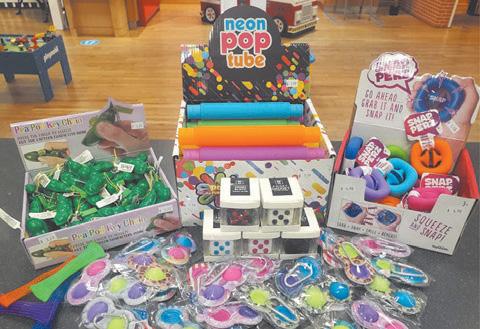





www.embracethedifference.org


This stunning collection is a beautiful way to spread a message of kindness & acceptance while making a contri bution to the charity of your choice. The symbol of a single square embraced by circles shows we are all connected, no matter what difference we may have. The square is dif ferent, but is an integral part of the whole circle. This sym bol has been finely crafted into a complete line of jewelry & apparel starting at $30. $5 to $100 from each purchase is donated back to a charity you choose.

With 9 WNY Locations to serve you. Call 716-633-1390 for the nearest location. www.federalmeats.com
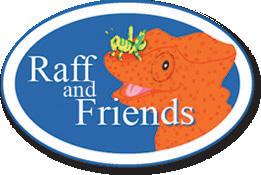





Give The Gift of Good Taste! Enjoy this real old-time butcher shop, where meat professionals assist custom ers one-on-one in selecting their meats, poultry, deli and seafood. Here is where you can have your favor ite items cut and wrapped to your specification. Their large deli section includes a full signature line of fresh ly prepared dinner entrées and appetizers to choose from. Federal Meats specializes in friendly knowledge able service where phone orders are always welcome. Federal Meats accepts Cash, Master Card, Visa, Dis cover and EBT. Holiday Gift Certificates, Steak & Meat Packages are also available for year-round gift giving.


Open Tumbling: Mon & Wed 8:50-9:45pm
Open Workout: ages 6+ - Fri & Sat 7:15pm-9pm Toddler Time: up to age 5 - Wed & Th 12:15-1pm FREE infant sensory class: ages 6 wks to 16 months - Tu 12-12:30pm
636 Girard Avenue, East Aurora • 716-687-3300 www.fisherpricetoystore.com
The Fisher-Price® Toy Store is your headquarters for all things FUN! Come check out our large selection of toys and baby products for every occasion. We offer a baby shower registry for all your new baby needs. Our expert staff will be happy to assist you with any questions you have to find the right product or gift item. Still not sure what to get? We also have gift cards available in any denomination. Call our information line at 716-687-3300 to hear our store hours or get directions to our store. Like us on Facebook.
70 Weiss Ave., W. Seneca/Orchard Park • 716-677-0338 www.gymnastics-unlimited.net


GYMNASTICS will keep your child moving all winter! No need to be a member for these programs to burn off that winter energy: Open Workouts Fri. & Sat. from 7:15-9pm just $13 (6 yrs & up), Toddler time on Wednesday & Thurs day from 12:15-1pm for 5 yrs & under, $7 per walking child and Open Tumbling on Monday & Wednesday from 8:509:45pm, $9. HOLIDAY GIFTS!!! For those gymnasts that like to practice at home, you may order Mats, handspring spotters, beams, bars, leotards and other gymnastics in spired gifts along with gift certificates for our programs.

1060 Niagara Falls Blvd., Tonawanda • 716-831-8300 www.kidtokid.com/tonawanda 980 Union Rd., Southgate Plaza, West Seneca • 716-675-0483 www.kidtokid.com/westseneca
Holiday gift shopping at up to 70% off mall prices! We’re a family-owned, upscale resale store with two great locations in Tonawanda and West Seneca. We buy and sell the best of what kids outgrow: kids’ clothing sizes 0-14, shoes, toys, books, games, baby equipment, maternity wear and more. We buy all seasons all the time, no appoint ment necessary. It’s a win-win for parents...by trading in outgrown items and buying what’s needed now, and by giving another child an opportunity to love those items. Kid to Kid supports and donates to local charities. Open Mon-Sat 9am8pm, Sun 12-5pm. Follow us on Facebook!
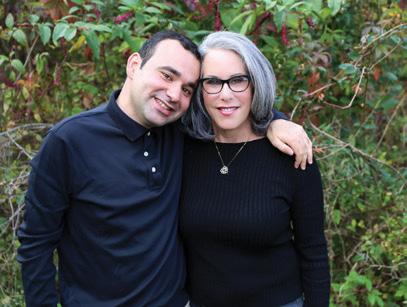
Monaco’s Violin Shop & Music Centre, Inc.
55 CrossPoint Pkwy., Suite 106, Getzville • 716-688-8600 www.monacosviolinshop.com
Monaco’s Violin Shop is a family owned and operated business serving this area since 1973. Monaco’s is the only store in WNY that specializes in the retail, rental, & repair of violins, violas, cellos, and basses. Monaco’s carries instruments made in Romania, the Czech Republic, Germany and others. Monaco’s is the exclusive dealer of the Samuel Shen line of instruments in WNY. We have years of experience repairing many different stringed instruments including guitars, banjos, ouds, mandolins, and more. Our annual sale on instruments, accessories, and musically inspired gifts, runs from November 25th thru December 23rd.
Parkside Meadow
Corner of Parkside & Russell, Buffalo • 716-834-8348 www.parksidemeadow.com
The Parkside Meadow - full bar and restaurant - is located on the corner of Parkside and Russell, across from the Buffalo Zoo. Enjoy a full menu of home cooked foods like Reubens, Al bacore Tuna Melts, Beef on Weck, Quesadillas, home made soups and appetizers. Also noted for their huge fish frys and Shaved Lamb sandwich. A warm and friendly neighborhood pub, featuring historic Buffalo museum decor. Offering local taps plus Genesee Beer on Tap. Kids menu, friendly, casual. Hours: Wed. & Thurs., 4pm - 8:30pm; Fri. & Sat., 4pm - 9pm.
Past & Present Science & Nature Store
3767 South Park Avenue, Blasdell • 716-825-2361 www.pastpres.com
Past & Present is a unique science & nature store of fering unusual treasures from around the world. Fossils, rocks, minerals & crystals are some of the geologic won ders you might find for that one of a kind gift. Beauti ful amethyst cathedrals, geodes & other natural pieces of art, along with handcrafted jewelry, are always available. Browsing our shop is a great experience for kids of all ages. Books, posters, science discovery kits & geology tools are just some of the great gift ideas available. Be sure to visit our free Fossil Gallery featuring dinosaurs, sharks, local & internationally found fossils.
Eastern Hills Mall, 4545 Transit Rd., Williamsville • 716-632-4202 www.raffandfriends.com


Shop local this Holiday Season! Raff and Friends is a locally owned toy store located in the Eastern Hills Mall. The store is packed full of an in credible variety of quality products including Melissa and Doug, Play mobil, Breyer, Bruder, Squishables, Calico Critters, Kruselings Dolls, arts & crafts, fidget toys, science, books, puzzles and board games for all ages, and much, much more. Shop in store, Mon-Sat 10-6, Sun 12-5. Or Checkout the online store at www. raffandfriends.com where you will find that perfect gift for that spe cial someone on your holiday list. Raff and Friends also offers Curbside Pickup for your online orders.
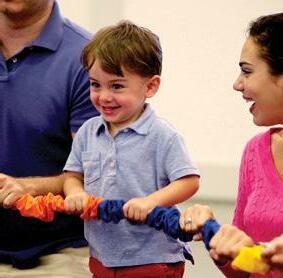


Haircuts for Kids
3316 Sheridan Dr., Amherst • 716-248-1455 3467 Amelia Dr., Orchard Park • 716-322-5332 100 Marketplace Dr., Rochester • 585-491-6555 www.shearmadnesskids.com
Kids haircuts are our specialty! With mounted cars for styling chairs surrounded by televisions playing your favorite movies & Xboxes for the gamers, our salon is a fun center that provides a positive distraction & a MADtastic experience for young dudes & divas. We offer a first hair cut package with scrapbook photos, our La De Da Spa focusing on nails, ear piercing & the full princess treat ment. Shear Madness Gift Certifi cates make great stocking stuffers! Our fabulous YOUniquey Boutiquey offers the largest selection of bows, awesome gifts & fun finds! Plan your next party with us, Princess Diva day or a Super hero party! Pottery Painting and Glass Fusing.
Urban Air Adventure Park
Walden Galleria, 1 Walden Galleria Drive, Buffalo • 716-568-7083 www.UrbanAirBuffalo.com
Urban Air Adventure Park Buffalo is much more than a trampoline park. We’ve got trampolines for sure, lots of them in fact. But, when it comes to in door fun for all ages, we’ve taken the indoor trampoline park concept to a whole new level with a huge variety of indoor adventures and attractions for kids of all ages. At Urban Air we push adventure to the limits. We provide a safe place where your whole family can jump, soar, race, climb, and play.
It was a sound that I had been dreaming about for several years — the blast of a ship’s horn in New York’s harbor. Best of all, I was on the ship (Norwegian Cruise Line’s won derfully named Joy) and heard the horn up close.

This blast signaled the beginning of a long-awaited Atlantic cruise and a re turn to one of my favorite destinations — Bermuda.
There is a special mystique and ex citement to cruising out of the city that is hard to match anywhere else in the world.

It is partly the history of the grand old liners and the classic movies with the backdrop of a ship sailing out of the city. But it is also the harbor and the iconic sky line itself.
Cruise ships sail down the Hudson River past the tip of Manhattan and the Statue of Liberty. In the distance the spider web silhouette of the Verrazano-Narrows Bridge, once the world’s longest suspension bridge, beckons with possibilities of adventures on the ocean beyond.
Cruising, the hardest hit of all travel experiences, is back welcoming every one largely without man dates. Children’s programs are in full swing, and a cruise vacation is once again one of the best fam ily and multi-generational travel experiences.
Last July, the U.S. Centers for Disease Control and Preven tion (CDC) shut down its risk advi sory program for cruise ships, although general guidance is still being provided.
The CDC also recommended that travelers check directly with their cruise line about COVID testing and vaccination protocols before traveling.
Cruising to Bermuda is ideal for hon eymooners, families, and first-time cruis ers as well as any one who revels in visiting one of the world’s loveliest isles 700 miles off the coast of North Carolina.
Mark Twain, a frequent visitor (and Buffalo resident for several years), called Bermuda “paradise but one has to go through hell to get there.” He obviously was not sailing on today’s luxury cruise ships but his description of Bermuda, a very neat and tiny fishhook shaped series of is lands, still rings true today.
It has a long tradition of welcoming cruise visitors who have been sailing here for more than a century. It is the oldest and one of the last remaining British crown colonies. Despite its remote location in the Atlantic Ocean, Bermuda never ceases to be an un mistakable outpost of Eng land.
The island has a reputa tion as a pricey vacation spot which has only increased in the post pandemic world. But most week-long cruises remain in Bermuda for three days

giving visitors time to explore the perfect pink beaches, the turquoise waters, and the country roads that “curve and wind hither and thither in the delightfulest way, un folding pretty surprises at every turn,” as Twain described the countryside.
Your ship and cabin will be your hotel and the ship’s dining rooms are all open as usual, so your additional expenses will be limited. There is time to experience the special charms of this 21 square-mile se ries of islands. It is safe, beautiful, full of friendly people, and unlike any other isle or port.
Though there are cruise excursions for additional charges, it is easy to travel around the island on your own — on ferry boats, pink public buses, and taxis. Mo peds have long been popular, but they can be dangerous, and driving is on the other side of the road. Tiny two seat electric cars are the only rental cars available for visi tors. Beaches are mostly public and free.
The Royal Navy Dockyard where our ship was docked offers a view of Bermuda’s rich maritime history. There is free Wi-Fi, a visitors’ center, and the Bermuda National Museum. It is home to artists and local shops full of perfect sou venirs. Watch glassblowers at work and meet with local artists at the Bermuda Arts Center.
Snorkel Park Beach is a short walk from the ship. Here you can snorkel in the shadow of a massive stone fort. The wa ter is shallow making it perfect for chil dren. There are lounge chairs, umbrellas, snorkel equipment, and a bar and restau rant. There is often live music, and it is a fun, relaxing beach visit.
Dolphin lovers should not miss Dolphin Quest, which offers interactive encounters with friendly bottlenose dol phins for both adults and children.
Bicycles are available for rent and bikers can head south on the 18-mile Ber muda Railway Trail. Pedal through Ber muda’s famous South Shore. Bermuda’s most famous beach is surely Horseshoe Bay Beach made up of soft pink sand and imposing rock formations. Warwick Long Bay stretches for half a mile and of fers some top snorkeling. Between these two beaches is South Shore Park, a wind ing trail with plenty of places to stop and enjoy the views.
A ferryboat was docked next to our ship waiting to take passengers to St. George’s, the isle’s first capital. It offers a step back in time. Some of Bermuda’s first visitors landed here in 1609 when their ship, the Sea Venture, was hit with a frightful storm and struck a reef while carrying English settlers to Jamestown, Virginia. Restoration programs have bur ied modern wiring so St. George’s looks much as it did in the 18th and 19th cen tury when most of the town was built.
St. George’s, now a UNESCO World Heritage Site, was the island capital until 1815 when it was switched to the city of Hamilton. (The ferryboats also travel to Hamilton.) Take a walk along Featherbed Lane, Old Maid’s Lane, or Shinbone Al ley.
Visit the sprawling Fort St. Cath erine built on the spot where Bermuda was founded. Explore the fort’s massive ramparts, antique artillery, labyrinthine tunnels, and chambers carved deep into the bedrock. Check out the museum and St. Catherine Beach.

NCL offers complimentary programs for children in the Splash Academy for ages 3-12 (no diapers) and the Entourage program for ages 13-17. Both programs offer themed activities and parties with the opportunity to make new friends.
For parents or grandparents dream ing of a special dinner and evening show, these free programs make everyone happy. Children can eat dinner early and then spend the evening with new friends and activities. Parents can relax knowing their kids are safe and having fun.
Youth counselors and cruise staff also offer fun interactive activities for the whole family including game shows, sports challenges, scavenger hunts, bal loon animals, and trivia competitions.

Then there are some special thrills for older children and teens as well as parents. Go for the checkered flag on a thrilling two-level racetrack in the middle of the ocean. Play nine holes of golf on the mini golf course. How about a laser tag battle? The Aqua Park offers a dou ble loop waterslide over the side of the ship. Rush down the Aqua Race or splash around in the family friendly Aqua Park. For the younger kids there is the Kids Aqua Park.
Travel Tip of the Month: For infor mation on Norwegian Cruise Line cruises visit ncl.com or call 866-234-7350. Be yond the popular one-week cruises to
Bermuda there are shorter and longer cruises out of New York that include a stop in Bermuda. For warm weather lov ers and water fans, remember that Ber muda is not in the Caribbean and winter can bring cool days which are not ideal for beach and water activities. Generally, April-October offers the best weather for a Bermuda cruise. For information on Bermuda visit gotobermuda.com
A tip for all family cruisers is to check the activity schedule on the first day. There will be a meeting for parents and children who wish to participate in the children’s and teen activities. Be sure to go to get your questions answered and sign your children up for the program.
Another tip: everyone receives a credit card size ID card which is need ed to open your cabin, charge anything on the ship, and which must be used to leave and return to the ship. To avoid an unpleasant surprise on your ship bill you can go to the front desk to remove any charging privileges from your children’s cards. One parent was quite unhappy because of a more than $200 bill from a child’s arcade playing days.
Whether you fly, drive, or take the train to New York, arrange to arrive at least the day before to start your cruise off relaxed and assure that you will be on board for that joyful ship horn. There is a parking garage next to the ship terminal.
Deborah Williams lives in Holland, NY and is a veteran travel writer whose work has appeared in national and internation al publications. She is the recipient of the Society of American Travel Writers’ Low ell Thomas Gold Travel Writing Award.














y daughter attends public school, in Boulder, Col orado, where her teach er is one of a handful of educators integrating social and emotional learning (SEL) into the classroom. But that’s about to change. The Boulder Valley School District (BVSD) board recently approved a grant to fund the inves tigation of SEL Com petencies, to create a system-wide approach to SEL.
M“More Goldfish!” my five-year-old demands. I summon all my patience. “Can you try that again?”
“I’m hungry!”
I take a long blink. “Honey? Can you—”
Her face is still beet red, but her body has relaxed. She takes a deep breath, then slowly blows the air through her pursed lips. This is the “birthday cake” breathing she learned in kindergarten.
“Mom, can I please have more Goldfish?”
According to the Collaborative for Academic, Social and Emotional Learning (CASEL), SEL is “the process through which children and adults acquire and effectively apply the knowledge, attitudes, and skills neces sary to understand and manage emo tions, set and achieve positive goals, feel and show empathy for others, establish and maintain positive relationships, and make responsible decisions.”
SEL is based on five core compe tencies — self-awareness, self-man agement, social awareness, relationship skills, and responsible decision making. Gaining these skills can make children and parents happier, while improving academic performance.

With a growing body of research supporting SEL as a driver of academic performance, emotional well-being, and
positive school culture, its rising popularity is not surprising.
Dr. Samantha Messier, the BVSD As sistant Superintendent of Instructional Ser vices and Equity, says the district’s interest in SEL stemmed from an expanding awareness of how deeply students’ social and emotional abilities can affect their academic success.
A 2011 meta-analy sis showed students who participated in schoolbased SEL demonstrated significant improve ments in social and emotional skills and behaviors and an 11 percentile increase in academic performance.
A 2017 study showed that in addi tion to increased academic performance, children who engaged in school-based SEL showed higher graduation rates and safer sexual behavior, even 18 years post-intervention.
Messier hopes SEL will give BVSD students a foundation for happy and suc cessful lives. “I believe that if we can accomplish [that], we will be preparing our students to not only have successful careers but to make a meaningful, posi tive impact on the world around them.”
While school districts are starting to adopt SEL, it’s not the norm. If your child’s school has yet to embrace it, Jen
nifer Miller, SEL expert, offers tips for parents.
Miller recommends creating a “Family Emotional Safety Plan,” so when emotional disaster strikes, you’re ready. It can be as simple as “When mom is angry, she’ll say ‘I need five minutes’ and then she’ll go in her room and shut the door while she cools down.” Explain ing the plan in advance precludes your child from anxiously wondering, ‘Why is she leaving me?,’ compounding [their] upset with fear,” says Miller. Addition ally, it highlights the importance of selfawareness for both children and parents.
While family arguments are natural, they’re not always healthy. According to Miller, data support specific types of fighting. While particular words, atti tudes, and actions can leave emotional scars, others strengthen relationships. Miller’s “Fighting Fair Family Pledge” sets boundaries on language and ac tions to avoid (e.g., criticizing, blaming, name-calling), while offering effective alternatives (like taking responsibility and focusing on solutions).
She says even if you only adopt this pledge within your marriage, your kids will still benefit. “Children learn most and best from modeling so even if we only adopt boundaries for fighting with our partner, we can watch the ripple ef fect throughout our family as children begin to use similar strategies.”
Miller says when faced with par enting challenges, it’s crucial to ask, “What skill does my child need to learn?” While being clear on what behaviors are unacceptable, we must teach our kids how to engage in the practices we do want to see.
For example, if your child con tinually takes her younger sister’s doll, instead of repeatedly telling her not to, Miller encourages parents to use this situation as a teachable moment.
“You might say, ‘You really want to play with your sister’s doll. Let’s see if there are ways we can play that keep everyone happy and also give you a chance with the doll. Hmmm, what could we do?!’ Get your child in volved.”
You can also have your child teach the behavior to a toy to make the les son more fun. Miller recommends giv
ing positive reinforcement when your child approaches a challenging situation in a constructive way. “Your specific recognition can go a long way toward promoting new positive choices.”
As a parent, I see the benefits of SEL daily. I see it when my daughter chooses deep breaths over screaming when I brush her hair, when she asks her little sister to take turns, and when she tells herself, “I can do it” before at tempting the monkey bars. I see it when she says, “Oops. I made a mistake. I’ll take a deep breath and try again.”

In my daughter’s class, SEL isn’t a separate lesson. Her teacher, Donna Young, infuses it into the classroom cul ture, which emphasizes relationships. “We are first and foremost, a school family,” says Young. Every morning, she crouches to make eye contact while greeting each child by name. Intermit tently throughout the day, the class does calming breathing exercises together. Young strives to model self-regulation; strategically placed sticky notes serve
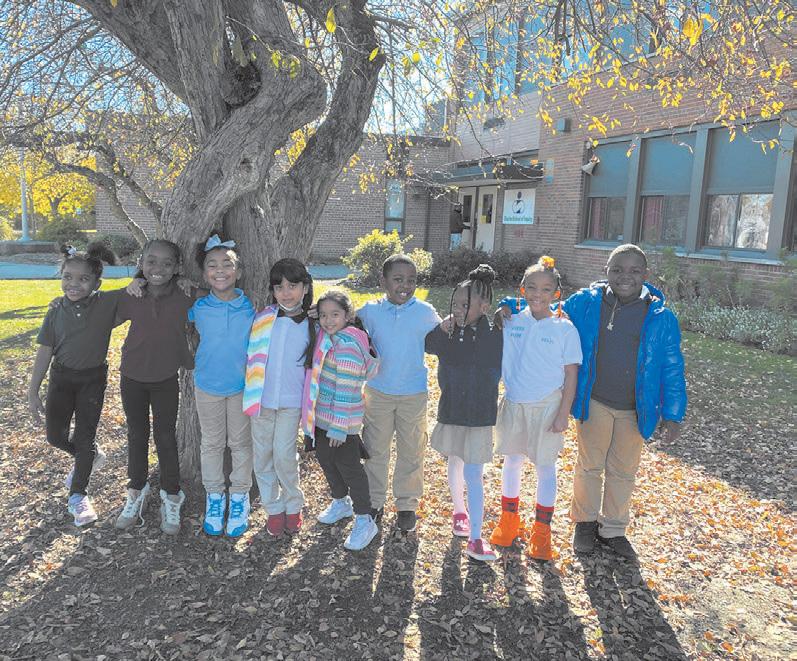
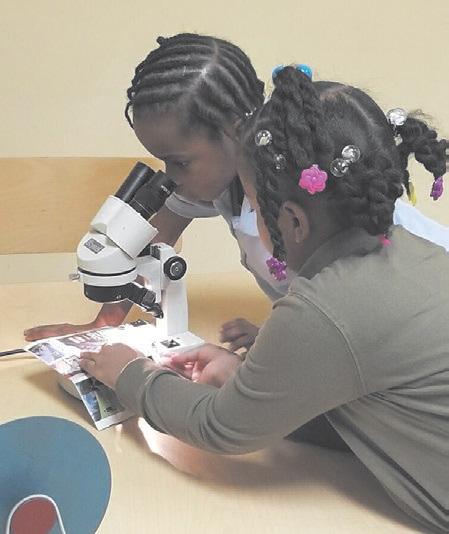
as reminders. When she falls short, she tells her students what she was feeling, what she did, and what she’ll do differ ently next time. “This just reinforces that everyone makes mistakes, all the time, every day, and it’s okay.”
SEL skills like self-regulation and empathy aren’t just beneficial for kids. Young wishes she knew about SEL when her kids were growing up. “If I had had the knowledge and self-awareness that I have now, I would have parented in a different way. I believe I would have had more compassion for myself and my mistakes as a parent of young children.”
This article was originally pub lished in The Washington Post.
Pam Moore is an award-winning free lance health and fitness writer, occupa tional therapist, and certified personal trainer. She’s also the host of the Real Fit podcast. She has written for The Washington Post, Huffington Post, Scary Mommy, and many others.
later, they reconnected with the former kindergarten students to gather informa tion about their lives and progress. In a not-very-surprising twist, the children who had scored the highest in the socialemotional realms while in kindergarten were the most successful young adults!
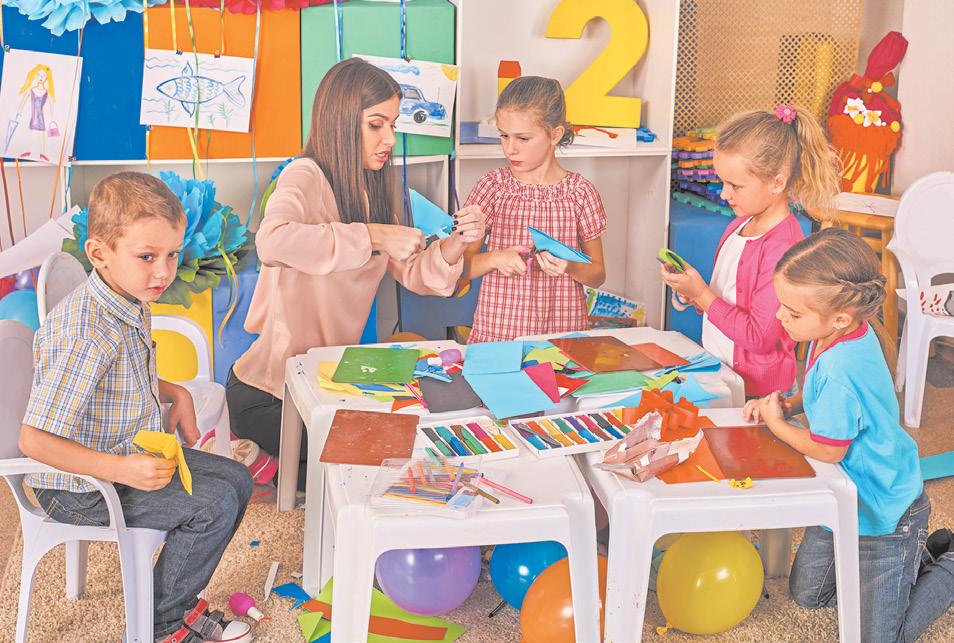
What if I told you that you could predict, when they are in kindergar ten, whether Michael, Camila, Jia, or Treyvon are likely to spend their lives entangled in the criminal justice system or as productive, prosperous members of society? Sounds ridiculous, right?
As a K-8 school principal, I am usu ally busy with discussions about how to improve reading, writing and math skills, planning curriculum development, train ing and mentoring teachers, or other school management issues. Therefore, perhaps it’s surprising that I’m writing about children’s social-emotional health.
Of course, as an educator, I believe that academic skills are very important, because after all, they improve produc tivity, increase the probability of cur rent and future success, deepen knowl edge and understanding of a variety of subjects and disciplines, expand one’s knowledge base... I can go on and on. So, why am I focusing on the primacy and importance of children’s socialemotional development?
The reason is actually rather shock ing. While it, intuitively, makes sense, it is downright frightening. Think about this statistic: Children’s social skills at the age of five can very accurately pre dict their future likelihood of success.
Really. Read that again. It’s mindblowing!
An impressive 2015 study in the American Journal of Public Health found “statistically significant associations be
tween measured social-emotional skills in kindergarten and key young adult out comes across multiple domains of educa tion, employment, criminal activity, sub stance use, and mental health” (p. 2283).
It was clear in the study that aca demic skills and capability, which many think are valid predictors of future suc cess, actually were not the factors that truly and accurately forecasted future success. In fact, it was kindergartners’ social skills and emotional intelligence that accurately predicted whether each child would flourish or fail; whether, 20 years later, they would be studying in a university or sentenced to prison.
This study, part of a growing body of literature, shows that early socialemotional interventions in childhood can positively affect the future tra jectories of these chil dren and, ultimately, their fami lies and communi ties.
As part of the longterm study mentioned above (Jones et al, 2015), the researchers interviewed kindergarten teachers and collected their data on each child. The teachers indicat ed whether each child could share, listen to peers, resolve minor issues, show em pathy, etc. The aggregate data was then used to rate each child’s social-emo tional competence. Nearly two decades
But here’s where it gets crazy: for every one-point decrease in social com petency at age five, a child had a 67 per cent higher chance of being arrested in early adulthood. A one-point decrease also meant a child had a 52 percent high er rate of binge drinking and an 82 per cent higher chance of becoming home less and jobless.
I was blown away when I read the study described above and others like it. Now, you can understand why I have been speaking out about doing everything we can to help parents build their children’s social-emotional skills, and to help teachers incorporate socialemotional skill-building into their class rooms.

Bottom line: Social-Emotional skills can – and must - be taught!
Dr. Lea Goldstein has been a K-8 prin cipal for 18 years. Before that, she was an elementary school teacher for 17 years. As an educator, and parent of five children, she has guided and advised many, many parents and, importantly, has retained her sense of humor. She is cur rently writ ing a book titled, “You Did What?! A Princi pal’s Guide to Help Parents Avoid Disastrous Mis takes.” She earned her doctorate in Ed ucational Leadership from the Universi ty of Rochester’s Warner School, and her Masters in Educational Administration from SUNY Brockport. Her proudest achievements are her happy household, her fabulous children and grandchildren and her many successful students.


Aurora Waldorf School (AWS) is a welcoming learning community for stu dents in Pre-K through 8th grade with a focus on relationship-based education. Situated on a 13-acre campus bordering a creek and an old-growth forest, we extend lessons into the outdoors, trans lating joy-filled learning into wonder and appreciation for the natural world.
At AWS, we believe:

■ Childhood is to be honored and preserved
■ Learning is not to be rushed
■ School can be a joyful place
■ Every child deserves to be outside every day

■ The arts are essential to our humanity

■ Education is more than just the exchange of facts and information

The classroom experi ence includes daily move ment, music, outdoor play, and artistic subjects interwo

ven with traditional academics. Handson lessons pique curiosity and enliven the learning experience, empowering students to immerse themselves in the subjects before them.
Based on the principles of Waldorf Education first developed in the early 20th century, the developmen tally appropriate curriculum is consciously adapted for today’s students, guided by a caring, dedicated community of teachers. Graduates of Aurora Waldorf School go on to lead their high school and college classes, build dynamic careers
that improve the world, and trav el the globe in a quest for experi ential learning that never ends.
Drawing from a variety of WNY communities, the school promotes ethnic, cultural, and economic diversity.
Schedule a tour and discov er how your child could benefit from the gifts of a Waldorf education. Contact us at (716) 655-2029 or email admissions@auroraws.org.

documents because one cannot read cur sive can put people at a disadvantage. This argument is much more of a per sonal conviction than an official one, but it should not be ignored.
— by Rebecca HastingsIwatched my daughter try to sign her name just above the signature line. She looked at me a little lost. I felt sorry for her and frustrated that she had not been prepared for something so simple. Cursive hasn’t been taught in my kids’ district in years. They had become whizzes on comput ers, but what about something as simple as signing your name? It made me won der if cursive was a thing of the past or something worth reviving.
It’s certainly a heated argument re garding the current state of education. The role of cursive is ambiguous at best and there are no clear answers.
One thing we can all agree on: the role of cursive in modern education has changed.
Incorporating cursive in the curricu lum had been on the decline, but it was in 2010 that we saw a drastic drop. With the implementation of more technology, there was a shift to more typing, however, the Common Core creating more rigorous classroom standards made things particu larly challenging. Something in the day had to go, and cursive was already ques tionable. It seemed like the obvious choice. Education Week addressed this spe cifically, referring to an interview with

Sue Pimentel, a lead writer for the Com mon Core Language Arts standards. In the interview, she explained “that the decision was about priorities — and that learning to use technology took precedence.”
Not having enough room in the cur riculum doesn’t outweigh the benefits of teaching cursive for many. While some argue to let cursive go similar to the way we abandoned the abacus and the slide rule for more modern instruments, we cannot ignore some of the benefits of cursive.
The word that comes to the fore front of many cursive debates is signa ture. As with my experience with my son, we cannot ignore the need to sign our names on documents. And the truth is that many kids are growing up without the skills to do so. If education is prepar ing kids for life, are we doing them a dis service by eliminating cursive? Some thing as simple as voter registration be comes an issue for those who have never been taught how to sign their names.
Signatures lead directly to the sec ond most common argument in favor of cursive. The inability to read historical
Some argue, however, that the abil ity to read cursive is a skill independent of the ability to write in cursive. Teach ing kids the skill of simply reading cur sive could be taught in as little as a thirty to sixty-minute lesson. The arguments are not as simple as cursive semantics.
The most surprising, and perhaps convincing arguments for cursive in the classroom have little to do with such specifics. They address more general benefits that would be easily overlooked.
Cursive can teach fine motor skills, increase the speed of writing, and aid in the creative process. While this may seem like a lofty argument, it goes be yond generalizations to specify the ben efits to those struggling with dyslexia or brain injury.
The New York Department of Edu cation took this further in their research to state, “Kids were better at processing information when doing so by handwrit ing as opposed to typing.” Discoveries like this have led New York, the larg est public school system in the coun try, to announce in February 2017 that they would be reintroducing cursive to the curriculum. Similarly, states such as Tenessee, California, and Louisiana re introduced cursive, with Louisiana pass ing legislation mandating cursive in the curriculum in grades 3 through 12.
But maybe this is not an either/or argument. Virginia Berringer, a profes sor of educational psychology claims that “printing, cursive, and keyboard ing activate different brain patterns, and that in some cases, students with cer tain disabilities may struggle with print but do well with cursive.” Perhaps we need to look at education as a toolbox,
with teachers putting tools in and show ing students how to use them. As they mature, students can pick the tools that work best for them.



There is likely no right or wrong an swer here. The school day is filled with demands, and cursive is a casualty of more than just the digital age. When a child is in school for 6 hours a day, that doesn’t mean that there are 6 hours al located for traditional academics. You lose an hour of that for lunch and recess and likely a half hour for transitions. Subtract 45 minutes for a special and an other 15 for a snack and your 6-hour day is down to four. And this is if everything goes smoothly.


The best we can do is evaluate the role cursive plays in each environment.
My son just started cursive (thanks to a rogue teacher who still sees the val ue) and I was shocked to see that his typ ically messy uneven printing was coun tered by smooth, thoughtful loops and curves of cursive. It made me wonder.
Maybe it’s time we ask ourselves and our schools questions:
• Is cursive a good homework as signment?

• Is it just a filler activity?
• What is the role of typing?
• How can you implement a modern take on cursive within the full demands of a school day?
• Can I teach cursive at home?
The best learning always starts with questions.
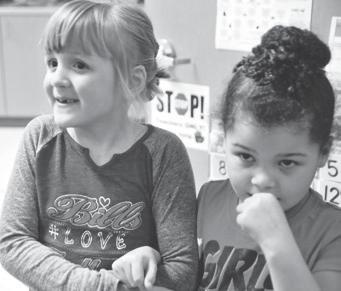

What questions will you ask for your children, their school, and their town regarding cursive?
Rebecca is a former elementary teacher who traded the classroom for writing when she stayed home with her three children. Passionate about authentic ity, faith, and family, you can find her at RebeccaHastings.net and on Amazon. In real life, she can often be found typing words, driving her kids places, or wher ever there is chocolate.
Kids today are spending an exorbitant amount of time glued to their electronics.
A 2017 survey published by Common Sense Media found that nearly all chil dren age 8 and under live in a home with some type of mobile device and spend an average of 2.25 hours a day on screens. This media time only increases with age — tweens use an average of 6 hours, not including time spent using media for school and homework, and teens are up to an average of 9 hours daily.
Being tied to phones, tablets, and computers takes away from hands-on learning time, which is unfortunate, since these types of experiences provide so many critical benefits to children as they grow and develop. As media be comes the go-to teaching tool in class rooms, it is imperative that we find fun and creative ways for kids to experience more hands-on, interactive learning op portunities at home.
First, let’s dive into five key benefits of hands-on educational experiences for children.

When children are primarily learn ing by reading, listening, and watching, they miss out on a key component of the educational experience that can only
happen by doing. Kids of all ages thrive when they are provided with interac tive, engaging, meaningful educational experiences. According to Brookings Institution, students who are engaged in hands-on learning are much more likely to remember what they were taught.
Interestingly, when children are physically engaged in an activity, they process the information differently and learn more effectively. Simply reading about a concept in a textbook or watch ing a demonstration in class is just not the same as physically experiencing what you are learning about.
A research study from University of Chicago measured this concept us ing brain scans and found that students who engaged in a hands-on approach to learning scientific concepts were more activated in the sensory and motor-relat ed parts of their brain. This also led to better quiz scores.
When children are part of some thing so fascinating that it fills them with awe, like a science experiment or art project, they get excited about it and want to learn more. Hands-on experienc es like these can spur curiosity in chil dren, which is so critical to their growth and success. Even though their constant questions may be exhausting for us at
times, their curiosity is exactly what we want to see from them so they continue to crave and seek out new knowledge.
Part of the problem with all of this technology is that kids are losing the ability to communicate and interact with others in person. When they hide behind their devices instead of talking face-toface with their friends and family, they miss out on a major chance for emotion al connection. According to Psychol ogy Today, this kind of communication interferes with actual conversation and undermines our ability to connect with others. As children are constantly ex posed to these quick impersonal ways of expressing themselves, they miss out on learning how to accurately convey their thoughts and feelings.
When we engage our children in fun hands-on activities, it opens a whole new world to them in which they need to ask questions, explain directions, and talk to others about the project. These projects also provide a special bonding time for parents and children or siblings to take on a challenge and work together. Whether it’s baking in the kitchen, work ing on a garden, or conducting a science experiment, kids will learn many impor tant social skills from the experience. These types of projects are also a great opportunity to invite over some neigh bors or friends for a playdate so that the kids can work on a creative project to gether instead of staring at screens.
It’s one thing to observe art in a museum or watch a building being con structed in a video, but it’s another thing for kids to actually create masterpieces with their own hands. These types of activities allow children to tap into their own creativity and explore as they go. It gives them a direct sensory experience, which offers a more in-depth way of learning about a subject. It also provides a chance to stretch their imagination as much as possible.
When a child has the opportunity to directly work on a project like a science experiment from start to finish, they can feel a sense of accomplishment when they see the results. They then become
empowered, which leads to more confi dence when they face the next challenge. They also learn from their mistakes and failures, which only makes them more resilient in the future. If the experiment does not come out as planned, they will learn to ask why and make adjustments the next time they work on it. Finally, the encouragement they will get from accomplishing a hands-on project will increase their self-esteem, which will seep into all aspects of their life such as sports, school work, and relationships.
There are a number of ways for us to share hands-on learning experiences with children of all ages.
Science Experiments - Working on science experiments is one of the best ways for kids to get excited about STEM in a hands-on manner. By work ing together on the experiments, your children will have the chance to get cre ative, follow directions, work with new science tools, challenge themselves to learn something new, and have fun be
ing fascinated by science.
Doing science experiments at home is a great way to demonstrate that sci ence is all around us. A good experiment shows kids that science is fundamentally about understanding the world.
Gardening - Working on a family garden together is another great way for children to grab some hands-on learn ing. By getting their hands dirty — liter ally — they learn to appreciate nature, hard work, and where the food we eat comes from. Because they play a direct role in growing the fruits and vegetables that they see with their own eyes, touch with their own hands, and taste with their own mouths, they are filled with accomplishment and joy.
Arts and Crafts - Art projects are one of the easiest ways for children to experience tactile learning. Yes, they can color on an iPad by swiping their finger from side to side, but that does not compare to actually holding a crayon in their hands and using different types of pressure to transfer colors onto the paper. Arts and crafts help stimulate a child’s creativity and imagination that
can’t be replicated by any electronic program.
Baking/Cooking Inviting the kids into the kitchen to help cook a meal or bake some treats can be a wonderful hands-on learning experience for them. Preparing a meal involves choosing a recipe, following directions, tracking time, measuring, and even working on simple math equations. Kids also have the chance to touch and feel the dif ferent ingredients. Although there are apps for baking cookies and making ice cream sundaes, nothing beats whip ping up a delicious treat with your own hands!
Sandi Schwartz is a parenting writer whose work has been featured in publi cations including Chicken Soup for the Soul, Scary Mommy, Parent Co., Moth erly, The Week, Very Well Family, The Gottman Institute blog, BlogHer, Your Teen, Urban Mommies, and numerous regional parenting magazines. She also manages the blog Happy Science Mom, a parenting toolkit for raising happy, balanced children.
Founded in 1851, Buffalo Seminary (SEM) is one of the oldest independent all-girls’ high schools in the United States. Our mission and vision honor a commitment to flexible learning, cel ebrating your personal pursuits while receiving a SEM education and mean ingful learning experience.


EWe support students and their passions through SEMFlex, a way for you to still receive our outstanding academic programming, with the flex
ibility to take time out of the traditional classroom. This groundbreaking initia tive allows students to complete their schoolwork remotely, while competing or traveling for special interests such as equestrian, music, figure skating and dance.
In this program, you’ll work one-on-one with a dedicated teacher liaison to create a specialized program that keeps you on track academically and on time for graduation.

Are you an aspiring dancer? SEMFlex allowed Emmy Robinson ‘22 to pursue the opportunity to join an intensive dance conservatory at the Joffrey Ballet School in Chicago. She’s now secured a spot with the Atlanta Ballet, dancing professionally.
SEMFlex can be granted towards much more than athletics. If you have a passion for academic research, land a lifechanging internship in NYC, work a parttime job to support your college fund, these opportunities are yours to take.
With an average class size of 10, per sonal attention is the hallmark of a SEM education. Offering 19 AP classes, more than 25 student-run clubs, 16 athletic teams, and incredible theater and arts programming, options for SEM students abound.
To learn more about our school and SEMFlex, visit buffaloseminary. org or contact Admission Associate, Caroline Gass at 716-885-6780 or cgass@ buffaloseminary.org.
205 Bidwell Parkway Buffalo, NY 14222 716-885-6780 buffaloseminary.org
Does your elementary-aged child suddenly get a stom ach ache the day of a math test? Maybe your middle schooler con stantly declares “I hate math!” or your high schooler doesn’t like Algebra be cause he or she doesn’t see how it con nects to real life.
If any of this sounds familiar, there is good news. Recent research shows that despite what they may think, most students can succeed at high levels in math. While it may be hard to disguise a dislike of math, if parents model a posi tive outlook, children are more likely to feel the same way. Research also shows that students like math more when they understand how it applies to their future.
Here are 25 easy ways parents can make math fun, interesting and relevant, and ultimately help children become better at it.

1) Use measuring and frac tion skills when you bake or cook with your child. When the measuring cup or spoon you need is dirty, ask your child to use a different size utensil cor rectly to get an equivalent amount.
2) Use grocery store math. For example, have your child figure out how many pounds of produce to get without going over a certain dollar amount. Say, “Please weigh and bring me three dollars’ worth of granny smith apples.”
3) Take math outdoors. Make a hopscotch court with addition or mul tiplication facts in the squares. Pick up sticks or use straws and make as many interconnecting squares or triangles as possible on the grass. Or combine math with your child’s favorite sport. For ex ample, if your child likes baseball, assign different points for single, double and triple hits. Have your child keep score.
4) Check out Texas Instruments’ “STEM Behind Cool Careers” (https://education.ti.com/en/ activities/stem/gen-stem) for a variety of videos connecting algebra, geometry, and physics to real world jobs like fash ion design, flying jets, and more. Stu dents can also take a quiz at this site to find their “stem style.”
5) Learn about the lives of famous mathematicians and what they accomplished. Some interest ing mathematicians include: Pythago ras, Archimedes, Albert Einstein, Isaac Newton, John Nash, Hypatia of Alexan dria, Julia Robinson, Emily Noether, and Maryam Mirzakhani.

6) Let your child plan a spe cial dinner. Then give them a bud get and let them shop for the ingredients without going over the budget.
7) Make technology your friend. Games and apps make learn ing math facts more fun than flash cards and drills. For homework help, try Di dax’s virtual manipulatives at www.
didax.com/math/virtual-manipulatives. html.
8) Introduce your teen to a fun math club. FIRST Lego League and FIRST Tech Challenge involve math, science and engineering skills.
9) Plan a trip together. Cal culate the miles you will travel at a des ignated speed. Decide how long it will take to get there.
10) Give your child an allowance that they have to manage. Together decide how much they will save, spend, and give away.

11) If your child is a teen with a job, help them write a budget and open a savings account.
12) Teach your child mental math tricks. These are like magic tricks in the math world, break ing down calculator-size problems into problems that can be solved mentally. Try Thoughtco.com for 9 Mental Math Tricks and Games (www.thoughtco.com/ mental-math-tricks-games-4177029).
13) Sing songs and watch math music videos. Check out “Schoolhouse Rock!” (“Multiplication Rock” and “Money Rock”) and “Num berock.” They are catchy ways to teach important math concepts.
14) Read picture books. “Bed time Math” includes fun short stories with math questions for different age levels and promotes discussion of math strategies. Other good ones include “The Greedy Triangle,” “The Grapes of Math” and” How Big is a Foot?” “G is for Googol” is an alphabet book for tweens and teens.
15) Have your tween or teen pick out the make, model, and year of a car they would like to buy when they are 18. Look up the value of the car and figure out how much they will have to earn every week until they are 18 to buy the car.
16) Get up and move! Take a brain break and play a math-themed YouTube or GoNoodle video that teach es about a math concept. These videos combine movements with vocabulary to help kinesthetic learners.
17) Go on a shape hunt. Find various geometric shapes around your house and yard. Draw or take photo graphs and label the shapes and what they comprise (for instance, the roof, the mailbox, the deck railing) and make your own version of a book like Tana Hoban’s Shapes, Shapes, Shapes
18) Have daily countdowns to special events, or do a ___ shop ping days until Christmas starting on January 1st.
19) Redecorate their rooms. Have your teen do a scale layout draw ing of the room to make sure new fur niture or decorations will fit. Teens and younger kids alike can measure win dows and floor space to make sure cur tains and rugs fit before purchasing.
20) Play board and card games that inspire mathemati cal thinking. Some to try are Uno, Crazy Eights, Mathopoly, Qwirkle, Yahtzee, and Rummikub.
21) Tell math jokes. Yes, they can be corny, especially for teens, but keep it humorous and light, and they may just remember the vocabulary.
22) Have fun with food. Cut food into fractional parts and use the food fractions to introduce equivalent fractions. For younger children, cut sandwiches and pizzas evenly and talk about equal parts.
23) Take a tour of your local bank. Talk to your child about words like loan, interest, and principal.
24) Celebrate special math days like the 100th day of school. On Pi Day talk about what it means and why it is important. Make your child’s favorite pie.

25) Put math in their hands. Use Legos to teach about area and perime ter. Math manipulatives like rulers, seam stress tapes, tangrams, pattern blocks, play money, fraction bars, counters, and geometric shapes are great for kids to make discoveries with while playing.
Janeen Lewis is a freelance writer and certified teacher with a Master’s Degree in education. She loves to see children get excited about learning math.
Moose Math by Duck Duck Moose - Includes games that teach counting, addition and subtraction.
Drive About Number Neighborhood - Kids travel through a seaside neighborhood and stop at different shops. Each shop has a different math game.
Cleo & Cuquin: Explore & Learn - Practice early math con cepts in English and Spanish.
PrestoBingo Shapes - Find shapes hidden in illustrations.
Peter Pig’s Money Counter - By Visa, this app teaches stu dents to identify, count and save money. Includes fun facts about US currency.
Marble Math Junior - Students solve math problems as they roll their marbles through mazes.
Crazy Times Tables - Supports development of fluency in times tables.
Mathmateer - Students do math to earn money to build vir tual rockets.
Chicken Coop Fractions - Helps children develop strategies for solving problems involving fractions.
Twelve a Dozen - Game in which kids travel through a futur istic town solving math puzzles.
Unit Converter - This app converts currency, data, energy, power or temperature.
Math Ref - Helps find formulas across multiple disciplines, but focuses on algebra, geometry, and calculus.
WolframAlpha - Finds formulas, gives graphic representa tions and shows how to get solutions to math problems.
Meta Calculator - A graphing, scientific, matrix and statis tics calculator app, this will help in those challenging upper level math classes.
Khan Academy - Detailed lessons and practice for learners in early math through Calculus.













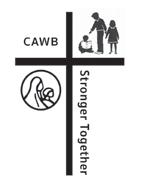



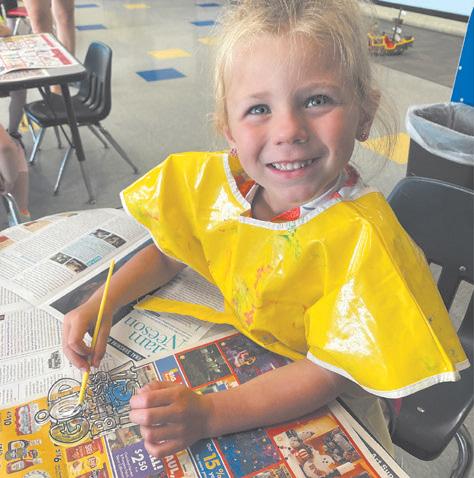




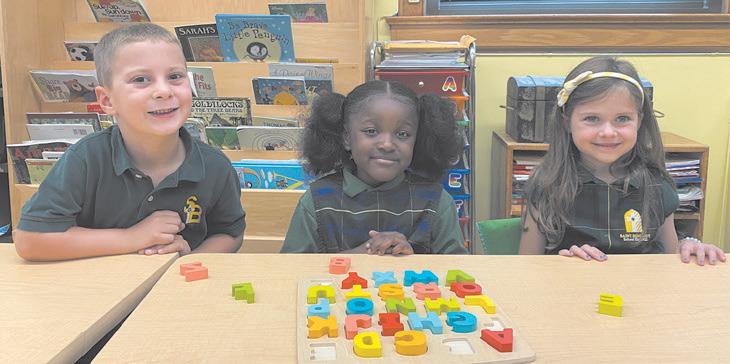







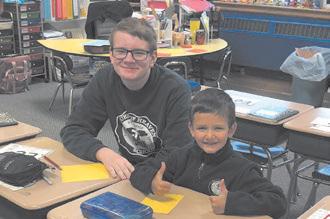

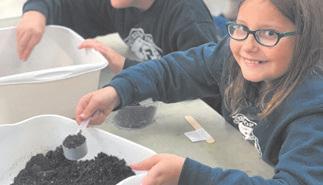

Iwalked into the huge doors of the high school, overwhelmed by emotion. It was all mixed up — joy, excitement, fear, pride, worry, disbelief. My daughter was oblivious to it all. As she walked beside me, she had her own feelings, but she hid hers beneath a cool smile, chatting with her best friends.











We were walking into her high school orientation. This was her first glimpse at the next four years of her life. It was my first glimpse of how fast time had truly gone.



There are big transitions we face with our kids when they’re little. First steps, potty training, the first day of kindergarten. So many milestones in such a short time. As they get older the milestones are harder to see.

There’s driving and first dates and graduation. All of them monumental in their own right. If we rush or blink too much, we might miss some of the other things: middle school, first dance, first A, first F. They’re all part of a lifetime of steps on the way to adulthood.

My oldest starts high school in the fall. And this feels like a big deal. Even in middle school I was able to reason through how she’s still a kid and life might be going fast but we’re in the middle.

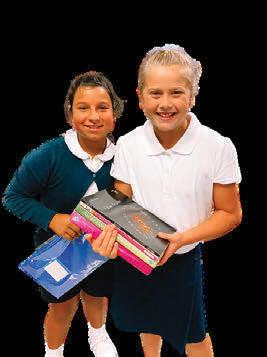
High school feels so much bigger, older, more like getting ready for goodbye. This shift feels complex for both of us. We are doing our best to feel ready. But not by looking at grades and course selection.

Here are 10 things that will help you both prepare for the transition to high school.
If you have a toddler, you don’t need to start buying her a high school backpack or prom dress, but you do need to start thinking about the trajectory of your child’s life.
So often we are busy trying to survive the day or get through the stage they’re in, but knowing they will get through it and move on is helpful.
Still, we need to think for a moment about high school.
What are you hoping your son or daughter will know before she goes?
What do you want her time to look like? How many activities will he do?
How will you preserve family time as she’s embarking on more independence?
Even in elementary school, we thought about how our time would look as a family. We decided our kids could do one activity at a time. When my oldest was in second grade, she wanted to try dance. She knew that meant she had to stop gymnastics to try it. This helped her understand the value of time, and it helped us keep our family priorities in check.
We don’t need to plan their courses for high school the day they enter kindergarten, but our decisions can help set the whole family up for success as they grow.


These things are not meant to scare you, but to remind all of us that they will grow and we can prepare for that.
Picture it all. Did you have a locker? Did you fall in love? What class was insanely hard? Walk down memory lane. Seriously. Now file it in the back corner of your brain.
pieces when it seems right and wanted. One or two short stories from your experience will go a lot farther than talking about your experience so much your child tunes you out.
Maybe it’s a cousin or an older sibling. Maybe a family friend who’s a few years older than they are. Find people you trust to speak wisdom into your child’s life.
Ideally, they are no more than 10 years older than your child. This is the perfect window for your child to look up to them and still listen to them. Beyond that, they’re just old (at least to a fourteenyear-old.)
This is the perfect time for kids to try new things and become responsible. High school years are the final practice for adulthood.
Learning responsibility begins right now – at whatever age they are at. According to Jessica Lahey in her book, The Gift of Failure, “children are starved for responsibility.”
Right now, your 3-year-old can help to bring the silverware to the table and lay the napkins on the table. Your 6-year-old can be taught how to wash towels. Your 12-year-old can run into the store for you and pick up a gallon of milk and some bread.
Your teen doesn’t want to hear story after story of your experience. Even your elementary school children will tell you to keep your stories to yourself. He’s living his own life. Your experience will never be his experience. He’s breaking free and you, his parent, could never understand what he’s facing.
At least that’s what he thinks.
You don’t need to completely discard your experience. But only share
My daughter has an aunt in her early twenties. Her aunt and I could say the same thing to her, but it would mean more coming from her aunt because she relates to her differently.
Start building that relationship now, while they are young. Start bringing people into their lives for them to look up to. Paving those paths of communication now will pay off when those hard-todiscuss issues come into their lives.
You’ll both be grateful to have these trusted voices in his life as he walks through these years.
“Kids flourish when they are given responsibility,” Lahey goes on to say. Encouraging them to take more responsibility is healthy and gives them a chance to make mistakes while you’re there to help them through.
Having opportunities for things to feel hard or to fail or to work through a problem with a friend are all essential life skills. And right now, you get to be their backup.
If they fail, they will learn. And Jessica Lahey reminds us that failure is one of the greatest teachers kids could have.
While we do want our children to be responsible, the goal isn’t to make them act like they’re 40.
I’m not saying I’m a college ex pert, BUT I did have two daugh ters attend the undergraduate colleges of their choice. Both graduated. One stuck with the same school for all four years of her undergraduate career. The second realized that the college she had selected wasn’t the right fit for her, so she transferred to another school in her ju nior year. Both experiences taught me a lot about choosing a college. At the very least, it made me realize what my husband and I should have considered when helping our daughters select their prospective schools.
For starters, what type of postsec ondary education is your child interested in experiencing? While some students opt for a community college, trade, or vocational school, many, like my daugh ters, choose four-year colleges. Some students confidently enter college sure of their major and future career path, oth ers may benefit from attending a college or university that offers a wide range of majors and minors. Just the exposure to different fields and classes may help them decide their direction.
For instance, my oldest daughter at tended a college that specialized in her field but didn’t offer a lot of other classes that piqued her interest. She ended up switching majors and schools.
My youngest pretty much knew the career path she wished to pursue. Still, she wanted to experience a broad range of classes. She chose a liberal arts col lege. It allowed her to dive deep into her major while also getting a well-rounded
education and exposure to a lot of dif ferent subject areas. The vast knowledge she acquired from her education allowed her to soar in her career, a career that requires her to be confident in offering advice on wide-ranging topics. If I were to do it again, I’d advise both my daugh ters to attend a school that allowed them to explore different fields and a broad scope of academic areas.
I would also suggest looking at the career services offered. If your child hopes to land a job upon graduation, will their school help them in their pursuit of employment? Does the school offer job fairs and on-campus interviews? Do they assist with resumé writing, conduct practice mock interviews, or tap into its alumni base for employment con nections and opportunities? It’s best to know upfront just how much assistance will be offered. What’s the college’s suc cess rate in placing students in jobs upon graduation? What about students wish ing to continue to postgraduate schools? Does the school offer much assistance there and what’s their success record?
I’d also inquire about the school’s graduation and retention rates. What percentage of the student population graduate in four years? Do a lot of stu dents transfer out before they complete their degree? Be watchful of any warn ing signs that may indicate students are not happy attending that school.

Here are a few other pointers we learned along the way on how to choose a college…
Before committing to a school, in quire about average class size. What’s the typical student/teacher ratio? What learning environment works best for your child? Are they okay with large lecture halls with hundreds of students or would they be better off in small, dis cussion-based classes? Class size may impact learning, so look for an environ ment that will allow your child to shine.
Who typically teaches the classes? Are classes taught by a professor or a teaching assistant? You would hate for your child to discover, all too late, that the professor they couldn’t wait to meet and learn from, is rarely in the class room.
Is your child looking to see the world and excited about studying abroad? If so, make sure the college or university they are considering enables them to do so. Not all colleges offer the same study abroad opportunities. If studying abroad is important to your son or daughter, make sure the school they are considering offers a vast array of study abroad opportunities and that your child qualifies for them. Inquire about research, internships, and hands-on op portunities, too. All of these will impact your child’s college experience.
Both my daughters studied abroad, one a number of times. The insights they both gained were invaluable.
Make sure your child visits any col lege or university they are considering. This may sound like a no-brainer, but I’ve known students who have selected a school based solely on the college’s reputation, promotional materials, and online write ups. Don’t make the same mistake.
The only way to really get to know a school is to immerse yourself in it. If the college or university offers an over night or weekend introduction, sign up! If they offer your child a chance to shad ow a current student as that student goes about their normal academic day, then encourage them to do so!
Have your son or daughter get as much exposure to the school as possible before attending so that they know ex actly what they are in for. No surprises.

Have your child attend open houses. Take guided walking tours. Ask ques tions. More importantly, seek out current students that are NOT part of the guid ed college tour and ask them questions about their college experience. You’d be surprised what you’ll learn by approach ing random college students on campus and asking them what they like or dislike about their school.
Ask them about the academic work/ life balance. Find out what students do on weekends and during their free time. Do most stay on campus or do they leave at the first opportunity? Do many students live on campus? Ask about ex tracurricular activities and whether they would recommend the school to some one else. If not, why not? If so, why? Ask them to tell you anything that might help determine whether the college or university is a good fit.
We learned so much from approach ing random students. Some of the stu dents we approached HATED their col lege and were more than willing to tell us why. Some complained about the aca demic course load, saying it was nearly impossible to stay afloat. Still, others commented on the partying that regular ly occurred on campus. One student we randomly approached pointed out all the empty beer cans hidden in bushes and upon the roof top of a nearby building. He said the place was typically strewn with even more empties.
Of course, there were colleges where we heard a lot of positive feed back. Students we randomly approached were happy and excited to be attending that college or university. They raved about their experiences, campus life, and the academics.



Clearly, students’ opinions are sub jective, which is why it’s important to approach a few students at each college. It’s safe to say that if all or most of the students you approach are voicing simi lar opinions or concerns, it’s best to lis ten.
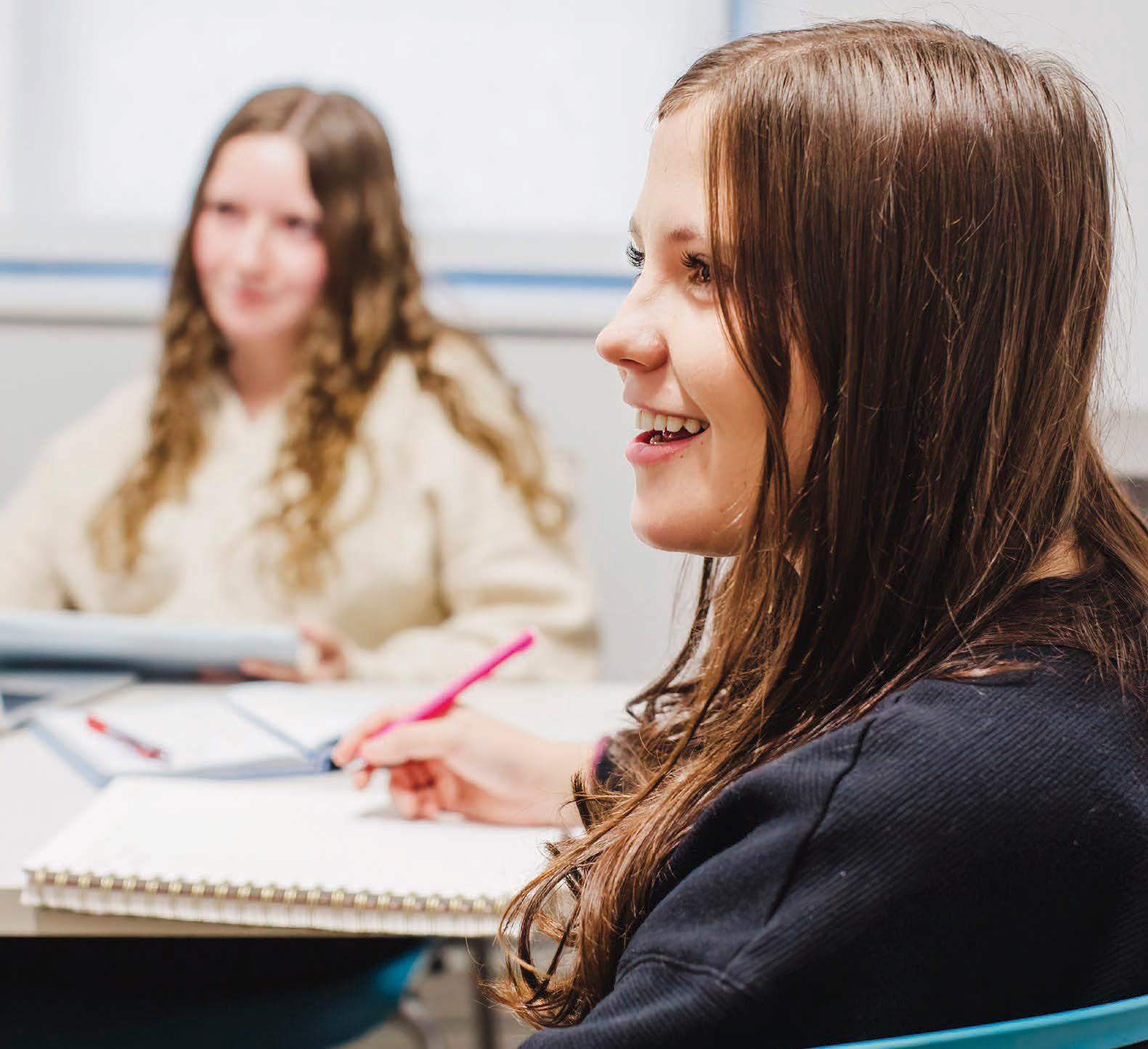
Take a long, hard look at the school’s location. Is it located in the middle of no where, with nothing but cows and fields as far as the eye can see? If so, does the school have enough social offerings and extracurricular activities to keep your college student busy and happy?
My one daughter attended a college that spilled out into a cute, lively little village full of clothing and specialty shops, restaurants, ice cream establish ments, coffee shops, a movie theater, book store and more. All were within walking distance from her dorm. She could enjoy breakfast at a popular local restaurant, a favorite among students and visitors alike, or grab a latte at a nearby coffee shop. She and her college friends were able to see a newly released movie at the local movie theater and then stop for a gelato before heading back to cam pus. Again, all within walking distance. Her college also brought in a lot of in teresting guests, speakers, and outside entertainment in addition to boasting a hefty list of extracurricular activities.
on page 41
My son asked for LEGOs for Christmas last year. He’s 12 and I hesitated because I wasn’t sure he’d use them. And if he did, it wouldn’t be for long. I knew his Lego days were numbered. As I thought about it, I chose to buy the LEGOs. Why? As long as my son wants to play, I want to encourage him to do that.
Does your teen still love collecting LEGOs? Keep giving them for birthday presents. I know, they won’t play with them like they used to, but if they want to hold onto their childhood for a little longer, let them.
Does she still want to snuggle up and watch a movie with you? Say yes every chance you get.
Just a few more blinks and they’ll be moving out to live at college or on their own. Make the most of these years while they’re still kids.
The best way is to lead by example. Be silly. Sing really loud in the car, have a water balloon fight, challenge them to a game of HORSE at the basketball hoop. They may roll their eyes, but that little kid inside will secretly love it.
This is one of the hardest things for teens to navigate, mostly because they don’t even know it’s happening. Time management is a skill they will need for their whole life.
Scholastic has a great guide (https:// www.scholastic.com/parents/family-life/ parent-child/teach-kids-to-manage-time. html) that takes you through teaching your kid about time management. You can start just by talking to your 3-yearold about how time works. Talk about the changing of the seasons or create a picture schedule to help them work out what happens in a day.
When they reach grade school you can teach them how to read a clock and give them set time amounts for things like eating breakfast or doing homework. As they get older you can help them work
through setting homework priorities or planning out a big project.
In high school, talk about courses available and which ones make the most sense time-wise. Would a study hall be helpful during the semester they’re taking that Honors course? Maybe having a break for an art class will help him focus when he’s in Biology. Help them think about their school day beyond cramming in all the classes they can.
After school time is even more important to think about. It’s tempting in high school to do all the things. Sports? Yes! Clubs? You bet! Driver’s ed? Absolutely. A job? Of course! With so many opportunities it’s hard to know how the puzzle pieces will all fit.
Talk about their time. Help them plan time for homework and activities and family. But also make sure they understand the value of free time. Again, the best way to do that is to model the behavior. Take breaks and have space in your day good and healthy.
It feels like everything is higher stakes once you hit middle school. And when they hit high school? Boom! We hit another level. Suddenly, it’s all about getting into college. And there is merit in that. But it’s a lot of pressure.
Find ways to navigate when your child needs to be pushed and when to back off. And start now, before they are in middle school. Back off on sports. Lighten up around grades. Be a gentle supporter around homework.
In all likelihood, the school is doing quite a bit of pushing. While we need to help our kids be responsible, we also need to give them opportunities to relax.
We can be the soft place to land when the world is pushing them on to succeed and do great things.
We can show our kids how to be serious and focused while maintaining opportunities to lighten up.
Middle school and high school can be a wild ride when it comes to friendships. There is no shortage of hormone-induced drama during these years. Finding ways to encourage solid, healthy friendships can be a lifeline for your child.
Make opportunities to have kids over. Start as soon as they start to make connections in preschool or elementary school. Make your home a safe space to have fun with peers.
As they get older, take time to talk with your child about his or her friends. Remember this is not a time to try to dig up problems. Rather, these conversations offer opportunities for your child to talk with you. Special Time is a perfect tool to use for creating space for your child to confide in you.
Laying this foundation is essential when he or she encounters a problem. Your child will feel more comfortable talking with you, allowing you to help him.
Making time to be together is something that you will appreciate as your child is getting older. But your child will appreciate it as well. Your availability is key to her feeling secure as she faces these transitions.
Remember, she may appear to be independent and capable of conquering the world, but she still needs your presence, support, and advice.
This can and should be enjoyable for both of you. From reading the same book to letting them plan a day for the two of you, there are a variety of ways to make this fun. Find what works for you and your teen.
I like to have dates with my kids. I take one of them out for a lunch at their favorite restaurant or we go to the museum or the park of their choice. It doesn’t have to be an elaborate and expensive affair. Just something that tells them they are special.
There may be moments for your teen (and for you) that feel overwhelming. It’s easy to look at high school as one giant thing you both have to face. When either of you feels overwhelmed, the best place to start is with what’s next.

When my daughter made her freshman schedule, she struggled to decide whether to keep taking band. She felt pressured to stick with it but also wanted space to try new things. Instead of thinking about band for four years, we talked about whether she wanted to do it for the first semester.
So often we lump high school together as one unit. Looking at the pieces, the years, the semesters, we can break things down and focus on the decision right in front of us instead of a four-year decision.
We don’t need to figure out what they’re going to do for a senior project the first day they walk through the door their freshman year. Just look at the next thing and face that together.
Think about the stage your child is in. Look at all the pieces of where he or she is right now and begin to think about the trajectory toward high school. Don’t use this as a planning time, rather, use this as a time to consider the stages to come and the challenges and joys you will face together.
What is one responsibility you can give them today?
Look at your daily schedule. When can you fit in some Special Time? When can you take them out on a date?
How are they doing on time management? What can you do to help them become more conscious about time? How can you help them determine their priorities?
How are you doing balancing the goal of giving them responsibility while still letting them be kids? How can you do better?
Think about your own school experiences. How can you keep yourself from oversharing?
Who is someone in your family or friend circle that your child can relate to? How can you help to build the relationship between them?
Also, give yourself time and space to think about your feelings as your child gets ready for high school. Acknowledge your emotions and thoughts to help you both through this exciting process.
By contrast, my other daughter at tended a college located in the middle of nowhere. The closest store, a large discount retail store, was a 15-minute drive away, as was the local movie the ater. There was nothing cute or invit ing about either. A couple of fast-food joints dotted the landscape, all requiring transportation to reach and none of them very appealing. Worse, the extracurricu lar activities offered at the school were limited.
Location. Location. LOCATION!
If your child is a bit of a homebody or extremely family-oriented or just doesn’t like to be far from home, they may not want to attend a college located on the other side of the country. Perhaps a college that is far enough away to grant them their independence, but close enough to allow them to venture home as often as they want, would be just the ticket.
On the other hand, if your child is daring, independent, and eager to try something new and not concerned about being far from home, then don’t let dis tance prevent them from choosing their dream college.

Does the college offer sports your child is interested in? Maybe your son or daughter isn’t an athlete, but they en joy attending college sports events with friends. What sports are offered and are students proud and supportive of their school team? In other words, is team spirit alive and well?
What about housing? Is it guar anteed for four years? Do most stu dents live on campus? What does a typical dorm room look like? Some colleges don’t include a dorm visit in their open house agenda. Make sure you see a dorm room. If your child is stuck in a loud, overcrowded, rundown, poorly lit and under heated dorm room with no air conditioning, it’s going to impact their studies. If the dorm smells of mold or mil
dew, the lights don’t work, the fans are broken, the furniture is subpar, and the mattresses are thin, it’s best to learn that now, rather than after your child moves in. It’s important that your child have a room where they are comfortable and able to get a good night’s sleep.
Make sure to try the food at all the colleges and universities you visit. Go to the school eateries. Order a meal that your child might order as a student. How’s the quality of the food? Does the college offer a wide variety of op tions or the same meal every day? Are there enough healthy options? Does the school offer enough variety to keep your child happy and healthy? Do they cater to dietary restrictions? For instance, do they offer vegan, gluten free, dairy free, kosher, and vegetarian selections?
Is the campus safe? Is the area sur rounding the college safe? What kind of safety practices does the college or university have in place? What’s the school’s safety record? Have there been any serious incidents in the past? After doing your homework on academic of ferings and campus life, if the college checks all the boxes, then ask your stu dent, do they feel safe and at home here? Could they be happy at this college for the next four years of their life? If the answer is yes, then encourage them to apply.
Linda B. O’Connor is a former producer and host of Parent Talk, a local parenting ra dio show, and a former WNY Family “Tweens & Teens” columnist. Her work has appeared in Redbook, Good House keeping, American Baby, Writer’s Digest, Men’s Health, The Buffalo News and more. She and her hus band reside in Orchard Park. She has two adult children, one recently married and liv ing in Kenmore.


6. While spelling does follow some rules, students may not have learned the exceptions to these rules, or there may be too many exceptions for a rule to have value.
7. And in this day of doing so much schoolwork on the computer, mis spellings may simply be typing errors.
Question: What are some of the reasons for the mis spellings many students make? What are some ways to avoid them? — Good Speller
Answer: First of all, parents need to understand that spelling is not a simple skill for children to master. It is tough for a lot of children and even for some adults. Spelling involves thinking about how words sound and then translating the sounds into print. Reading, on the other hand, is just recognizing what is there — not that this is to imply that it is easy to learn to read. Nevertheless, most young children are far better read ers than spellers.
There are three groups of children who are likely to have greater difficul ties with learning to spell words. Dys lexics have problems isolating sounds in words and turning them into letters. And spelling is also difficult for those with dysgraphia, as they have physical prob lems writing or typing words. The last group of children are those with auditory processing problems.
When children first begin to spell words, they do not have down pat spelling rules or the sounds of individual letters, especially short vowels. So, they use just a few letters to spell a word. This early spelling common with 5- and 6-year-old children is called inventive spelling and is not caused for the same reason as mis spellings of older children and adults. If you are curious about the words that are commonly misspelled, just search on line for lists. You will easily find the 100 most commonly misspelled words, as well as those misspelled by grade level.
Fortunately, 85 percent of all words fol low sound to letter correspondence, and many others follow a few basic rules with few exceptions. The spelling of the remaining words simply will have to be memorized.
Once children have grasped the basics of spelling and have had serious spelling instruction, there are a number of situations in which they are likely to misspell words. Here is a list of the most common reasons children misspell words:
1. One of the most common of all is the use of homophones (words that are pronounced the same – but mean different things depending on how they are spelled). Some very common examples of these mis spellings are: to/two/too; you’re/ your; they’re/their/there; are/our and it’s/its. It takes considerable instruction for children to learn to spell homophones correctly.
2. Another cause of spelling errors in the early grades as well as in later grades — even high school — is the mispronunciation of words. This is especially true of unfamiliar words in textbooks.
3. Students may forget to double let ters in words such as committee, embarrass, and tomorrow.
4. Words may be written as one word when they are actually two (every day not everyday, thank you not thankyou, and all right not allright).
5. Students may not realize that some common words have silent conso nants and misspell them as caracter and enviroment.
There are ways to reduce children’s spelling errors. Begin by encouraging the use of spellcheck so children be come aware of the errors they are mak ing. Next, a list of their commonly mis spelled words should be made. The list should then be studied to see if there is a pattern to the words that are misspelled. If so, this is the problem that should be addressed. It is best if instruction on spelling these words correctly is given by the teacher, and a few of these words are added to the weekly spelling test. If not, parents can work on the list with their children.
Question: My daughter has started to write essays in middle school. She is a real slow poke at this and is not com pleting them in school. Do you have any suggestions for ways she can speed up the process? It will obviously be a big problem in high school. — Just Too Slow
Answer: Of course, a basic way to solve this problem is to practice writing essays at home. Practice does make es say writing faster and easier. First of all, she needs to learn the very basics of es say writing which is to jot down the main idea and three ideas to support it. Help her do this for essays she has already written at school and not completed. Then go on to possible essay topics. This will teach her the foundation of success ful early essay writing. It may take some time and a lot of conversations with you to accomplish this.
Parents should send questions and com ments to dearteacher@dearteacher.com, and visit the dearteacher.com website to learn more about helping their children succeed in school.

Helping all parents make their children’s educational experience as successful as possible
Houston, we have a problem! Two problems actually. Many parents I speak with have less restrictions on screen time dur ing the summer because there are so many outdoor options to keep kids busy. As we roll into the winter months, it gets harder and harder for kids to go outside, so they tend to gravitate toward their electronic devices. Reinstating those screen time limits after months of freedom will be difficult enough (problem #1). When you add new technology by way of holiday presents (problem #2), limiting technol ogy use can become overwhelming very quickly. Here are several options for par ents looking to control technology use in their household.
Apple has a robust, free, built-in screen time option in their iOS prod ucts (iPads, iPhone). This is my pre ferred method for limiting use because it is built into the phone/tablet directly. Screen time allows you to set limits on how long a child can use a particular app or set of applications. You can also turn off access to certain or all apps before and after hours. In other words, you can limit your kids to an hour of Roblox and only between the hours of 3:00pm and 8:00pm. Kids can request additional time and you can grant that using a pin code. Parents can also limit web brows ing based on content and privacy restric tions. The tool is easy to navigate and quite robust once you get it set up. Set ting up Screen Time is not too difficult, but you may need to visit YouTube for video tutorials if you run into trouble.
Circle allows parents to take better control of the Internet at home. It is the only device on this list that was specifi cally designed for parents. One primary advantage Circle has over other similar tools is that it does not require parents to install anything on the computer. This makes it easier to get set up and allows parents to filter school-issued devices as well. The setup is simple. Plug it in, connect it to your home WiFi, and then all the configuration is done through an easy-to-use app. Parents can choose to set time limits for usage, and those limits can be different for each child. Content filtering (blocking out websites) can also be done on a per-child basis.
For example, parents can choose to block YouTube for younger children and allow it for older ones. The “Pause” and “Offtime” features are incredible options for parents who have children attending school remotely. Parents can choose to turn the Internet off for a set amount of time for a group of devices. Imagine being able to block the Xbox/ Playstation/Switch from using the In ternet until your student has their work completed. You can then turn the Inter net back on with a simple swipe of your finger, even if you’re not at home. Other features such as Bedtime and Rewards make Circle one of my favorite devices for parents. Circle Mobile Management provides parents with similar function ality for older children with their smart phones. Circle costs $129 per year or $299 for a lifetime subscription.

Bark takes a different approach to content filtering. Bark monitors texts, email, and more than thirty of the most popular apps for inappropriate content. The Bark system alerts parents based on the content it monitors. Parents can be alerted when the system sees activity of predatory behavior, suicidal ideation, and cyberbullying. Bark does not moni tor things in real-time, though. The ma chine learning algorithm system needs time to review the content it scans for potential threats. Suggestions are given as to the best course of action going forward based on what the system sees. Bark provides tools to limit screen time and filter out websites as well. While I have not personally used this product, I have heard good things about it from those who have. Parents can choose from Bark Jr and Bark. Bark Jr handles blocking out bad websites and runs $5 per month. At $14 a month or $99 an nually, Bark will tackle the list of things mentioned above.
One of the more recent trends in the last few years is for wireless routers to come with built-in software for filtering the Internet. The wireless router is the physical device that sends out the Wifi signal to your home. Every wireless router is different, though. They all have various features and different levels of difficulty to get configured. Eero is my recommen dation due to its ease of use, scalability, and features. Eero is incredibly easy to get set up. An app on a smartphone or tablet will guide you through the setup. It took less than ten minutes to complete the process in my home. Parents can set up profiles for a group of devices to do things like pause Internet access during dinner or enable Internet content filtering to help keep children safe online. A pro subscription includes additional options such as threat detection and automatic ad blocking across all your devices. Eero also lets you expand the wireless cover age in your house. The Eero system uses a scalable model to ensure you get the cov erage you need, regardless of your home’s size. Smaller homeowners can get by on a single Eero base station while larger homes can utilize additional beacon units to carry the wireless signal throughout.
Aside from Eero, Google Nest Wifi and Netgear Orbi are two different options to explore. Expanding your home wire less network and adding built-in safety features might be the perfect solution for parents this school year.




The two options above use a physi cal piece of equipment to lock down var ious aspects of the Internet. OpenDNS uses software to prevent devices from accessing unwanted content, but it does not require you to install software to work. This makes OpenDNS a fantastic option because you can block content for all your wireless devices in one place. Oh, and it’s free. There are a few down sides here, though. It can be a bit tricky to set up. You may need to reach out to your local IT expert to get this setup. It also lacks some of the features of other options such as time limits, pausing the Internet, or blocking an app altogether. While it’s not as full-featured as the first two options, OpenDNS is a free solution that parents can use to filter out sites or entire categories of sites from all house hold devices.
The tools listed above can be so much more than a way to limit or restrict your kids. They can provide parents with a better idea of how their children are spending their time online. The knowl edge of what they are doing online can lead to some phenomenal conversations. If you decide to use one of these tools, I will encourage you to consider all the positive ways you might connect with your kids based on what you see. Have a conversation about the crazy YouTube videos they watch or pause the Internet from all devices during dinner so you can eat distraction-free.
Mike Daugherty is a husband, father of three young children, author, speaker, Google Innovator, and possible Star bucks addict. He is a certified education al technology leader who has served in a variety of roles through his twenty-year career in public education. Currently, Mike is the Director of Technology for the Chagrin Falls Exempted Village School district in Northeast Ohio. As an IT director he has developed creative, well thought out solutions that positively impact teaching and learning.

My daughter, Violet, really loves dinosaurs. I always knew she liked them, but I didn’t know just how much. I guess I didn’t realize this before, because it’s only now that she is becoming more ex pressive with things that she likes or dis likes. If she likes it, she’ll let me know and if she doesn’t, then she’ll really let me know. “Dada, no!” Maybe twenty-six months is the verbally expressive age.
With the release of the latest Juras sic Park movie this past summer, our Target has been taken over with Juras sic Park toys and memorabilia. One day while running a few errands, I stopped at Target to pick up a few groceries. It was pretty busy for a Tuesday, so much so that I snuck down the toy aisle to escape a traffic jam of shoppers. By the time we made it halfway down the aisle, it oc curred to me that this was probably the first time I had taken Violet through the toy aisle, or at least at an age when she would have shown interest.
Upon seeing the rows of endless toys, her eyes instantly widened and lit up, as she let out a huge gasp of excite ment. I admittedly didn’t stop the cart to
give her a chance to look around as I was in a rush to get back home, not even con sidering how excited she was. For some odd reason, it didn’t occur to me that I could have easily stopped to let her look around. But it wasn’t until we got back in the car to go home when I realized how disappointed she was in that mo ment. I felt saddened by the whole thing and knew I had to make it up to her.
A couple of days later while I was watching Violet flip through one of her books, she pointed to a random dinosaur and said “ohhh, dino!” A few minutes later we were in the car and on our way back to Target. Violet was in for a dino saur surprise. She just didn’t know it yet.
I was determined to make up for her poor toy-aisle experience by buying her whatever she wanted — of course, within practicality and budgeting limits. When we arrived at Target, I carried her in and quickly fastened her into a shopping cart and hurried over to the toy aisle. Violet was doing her usual, looking around at everything in amazement, talking to the people walking by, randomly calling ev eryone, Mama, Papa and now Me-maw, which is how she pronounces Grandma
and I’m secretly hoping she breaks out of it. I was never a big fan of the longterm grandma nicknames.
I look at Violet and tell her I have a big surprise for her. Of course, she doesn’t know what I’m talking about, but I think she could tell by my enthusi asm that something amazing was about to happen. When we make it to the toy aisle, I park my cart right next to the Ju rassic Park section and she immediately goes nuts. There were T-Rex’s, Stego saurus’, names I couldn’t pronounce, a Velociraptor with robotic arms, a squishy green Dino guy, and a five-foot long brontosaurus that she’s probably getting for Christmas. My plan was to let her pick the ones she seemed to favor the most, put them in the cart, then weed them out by which ones she paid less at tention to. After about six minutes, I had a cart full of prehistoric monsters and even a large yellow Tonka dump truck that somehow found its way in.
Of all the choices she had, there were two that she seemed to cling to the most; a small squishy T-Rex and a not so inviting looking Indoraptor, who was the villain dinosaur of the movie. While Violet was transfixed by what she had in hand, I quietly placed the other toys back on the shelf, not in their original spots, because time was of the essence, and I needed her distracted.
On our drive home all Violet could talk about were her dinos. The excite ment in her voice made my whole day. When we got home, she couldn’t take her shoes off fast enough. She ran into the living room to show Andrea her new friends, triumphantly raising each dinosaur in the air as if she just won something. I also felt victorious. Maybe I spoiled her a little that afternoon, but I’m continuously told these days won’t come by very often.
Richard De Fino, a freelance writer by night, first became a father at age 34. After losing his first-born son Louis, at birth, he was determined to keep his memory alive the best way he knew how; through words. Now, with the birth of his daughter Violet, he plans on continuing to share his fatherhood journey each month with WNY Family readers.


2 Netflix Rating Overall Violence Sex Profanity Alcohol/Drugs PG-13 B+ C A- A- C
Enola Holmes is on the case. Hired to find Sarah Chapman, who went missing after being falsely accused of theft at the match factory where she works, Enola’s quest will take her from high society balls to the slums and factories of Victorian London. Packed full of adventure and non stop action, this movie features appealing characters, impressive period detail, and a deliciously twisty plot. It also has some very intense violence so the PG 13 rating should be taken seriously. Photo ©Netflix Till Theaters Rating Overall Violence Sex Profanity Alcohol/Drugs PG 13 A C A A B
When 14 year old Emmett Till was kidnapped and murdered in 1955, his mother insisted on an open casket funeral so Americans could see the brutality of his lynching. This movie is the story of Mamie Till, her agonizing grief and steely resilience and how her loss helped catalyze the Civil Rights movement. It can be heartbreaking to watch but it also makes a critical period of history accessible to teen viewers. Photo ©Universal Pictures


With the death of King T’Challa, Queen Ramonda must protect her kingdom from the global powers that seek its vibranium resources. When the hunt for vibranium disturbs the aquatic Tolakan kingdom, Wakanda is drawn into war. This film consists of one violent scene after another and eventually all the spear battles get dull. It’s also running two plots, one good and one ridiculous, but it still provides an escape

Struggling to adjust to his new city home, Elmer argues with his mother and runs away. He is swept off to the magical Wild Island where he must help a dragon named Boris save the island from sinking into the sea. Beautifully animated, this sweet movie contains plenty of adve nture, lessons about making friends, and a plotline about overcoming fear that will help kids with anxiety. This is a great choice for family movie night . Photo ©Netflix The School for Good and Evil

Sophia and her unwitting best friend, Agatha have been carried away to the legendary School of Good and Evil. But Sophia’s convinced there’s been a mistake. She’s been assigned to the School of Evil when she wants to be a magical princess. Based on a YA novel series, this film delivers fast moving action as well as a lot of violence. It also provides probing questions about morals and ethics, which makes it worth watching for teens. Photo ©Netflix
Detailed reviews available at www.parentpreviews.com

to you and says they got in a fight with their best friend, you might want to jump to the rescue and say “Good riddance! I didn’t like them anyway, you’re better off without them.” But if they make up the next day, your child may be too em barrassed to come to you and say they resolved their differences.
According to Dr. Miller, one reason parents make these mistakes is because there is a lot of negative portrayals of teens in the media and in our culture.
My daughter says this to me more often than I care to admit. I ask a lot of ques tions because she does not give me much information. So, I’m left wondering, how could I change?
As a mother of twin 15-year-olds, I often struggle to find ways to effectively communicate with them.
A recent research study done at Children’s Hospital of Philadelphia ex plored ways for parents to improve com munication with their teens. Dr. Victoria Miller, psychologist and author of the study, explained some of the prompts used in the study that helped parents and their teens promote reciprocal com munication instead of one way. She also discussed common mistakes parents of teens make when trying to talk to them.
Focusing only on problems
“One of the biggest mistakes par ents make is that they tend to focus only on problems like when our teens make a mistake or don’t live up to our expec tations rather than also communicating with them about their teens’ strengths and what is going well. We can some times forget to do that in the busyness of daily life,” says Dr. Miller.
Asking too many questions or of fering unsolicited advice
Dr. Miller explains that another mistake parents make is giving advice and lecturing, which can backfire and cause teens to shut down especially
when they didn’t ask for advice. It can teach them that they can’t handle prob lems on their own which can get in the way of their confidence. It is better to wait until they ask for advice.
Teens can feel that parents are too controlling when they ask too many questions. They can also feel as if they are being interrogated instead of hav ing a conversation causing them to shut down.
Dr. Miller says that when your teen comes to talk to you about a problem, it can be difficult to hide your emotions. She suggests trying not to get angry or upset but instead focus on the fact that they were willing to talk with you. This will help to keep those lines of commu nication open by listening and offering guidance when asked.
Parents may react emotionally when their teen tells them something upsetting.
“When your teen comes to you say ing something like, ‘Tom asked me out,’ a parent’s first reaction might be, ‘My daughter’s too young to date’ but in stead, try to use this opportunity to navi gate conversations about how to have a healthy relationship,” says Dr. Miller.
Don’t over-empathize Dr. Miller says it may seem coun ter-intuitive to not over-empathize with your teen. But it can backfire. She of fers the example that if your child comes
“You get the eye roll ‘oh well she’s a teenager,’ which can cause parents to really worry about the teenage years and focus on the problems because they wor ry about their teens and they want them to do well and succeed,” says Dr. Miller.
It is important to remember that it is normal for parents to have some chal lenges communicating with their teen.

Focus on How Teen Years are an
Most teens are well-adjusted, and they have good relationships with their families, peers, and they contribute to their communities.
“I think shifting the focus on how well adjusted most teens are and remem bering that adolescence is a positive time in development and very exciting is a good thing that will help to improve communication with your teen,” says Dr. Miller.
“It is important to notice and talk with your teen about his or her strengths,” says Dr. Miller.
She explains that strengths don’t mean what they are good at or what they have achieved but rather the quali ties about your teen that will contribute to becoming a healthy productive adult. For example, if your daughter is a star soccer player, think about what it is that makes her good at it like her work ethic or being a good team player.
“It feels good to notice what is go ing well for our kids instead of worry ing about that test that didn’t go well or that she is upset with something with a friend,” says Dr. Miller.
“Mom please stop interrogating me.”
Dr. Miller explains that during adolescence, teens are trying to separate themselves from their parents so they might do those things like walk away when you are trying to have a conversa tion or keep 10 feet behind you at the mall or focus on their phone when you are trying to have a conversation.
“This is really because teens need to see themselves as different and separate from their parents in order to figure out who they are and to become more inde pendent. This can make parents feel like they don’t matter but that couldn’t be further from the truth,” she says.



In Dr. Miller’s research study, she used conversation prompts to help the parent and teen facilitate conversations that focused on strengths. The parent/ teen pair were instructed to take 10 min utes together and look at examples of strengths and then come back together and talk about it.
Dr. Miller explains that prompts in cluded things like:
Why did you choose these strengths for you and the other person?
Give examples of ways the other person demonstrates these strengths you choose.
Did the other person choose strengths that you didn’t expect?



“They both gave strengths for each other which was the reciprocal aspect of the intervention that was really interest ing and unique,” says Dr. Miller.

She explains that by shifting to the positive, it can help parents and kids feel better. It doesn’t mean your teen doesn’t have weaknesses, but the key is to sup port your teen and use their strengths to address those limitations.








She also stresses that it is important to shift your thinking of strength from achievement and what you are good at to who you are as a person.

This article was originally pub lished in Grown and Flown.
Cheryl Maguire holds a Master of Counseling Psychology degree. She is married and is the mother of twins and a daughter. Her writing has been pub lished in The New York Times, Parents Magazine, AARP, Healthline, Grown and Flown, Your Teen Magazine, and many other publications.






Everyone needs help in relat ionships. Don’t wait until it is too late.

Heal and improve your most important relationships. Offering relationship coaching, support groups, and marital/divorce mediation. Online classes begin January 2023

is of utmost importance to today’s families. Promote your services to 55,000 WNY families in our section.
Don’t allow the divorce to ruin your holiday spirit.
So, the lights are not as bright and the holiday songs are a bit more an noying than normal, but that does not mean that holiday spirit as you know it is over. The fact is that while this year may be tough, the next year will be easier. The best present you can give to yourself when going through a divorce (besides maybe an extra Santa gift for yourself) is allowing yourself to know you will survive this.
Don’t take this opportunity to discover religion.
So, you are Jewish and never cel ebrated Christmas in your life, until you met your spouse. However, unless you are going to get a tree and replicate the holiday the way that your children have experienced it during the marriage, you should give the day to the spouse who will really celebrate it.
Don’t let the sentimentality of the holiday season weaken your positions.
If you are going to regret them — it is the season of giving — just be sure not to give away everything you hold near and dear. You have been working so hard all year to reach a settlement and there are certain positions you have main tained and are very important to you.
This is the first Christmas without your children, so you decided to cele brate the week before. Because you feel so terrible about the impending divorce, you buy out the toy store. You do not need to buy your children’s affections — they love you regardless of whether you get them a hoverboard or a skateboard.
Don’t make your children feel badly that you are alone during the holidays.
Putting on a strong front and let ting your children know that it is okay for them to enjoy the holidays with the other parent is an important (albeit maybe painful) message to get across to them. It will also make it much easier when it is your holiday time with the Children next year.
Do make all efforts to be on the “nice” list.
The holidays are an emotional time for many people and even more so when those people are going through a di vorce. It is very tempting (sometimes more than the holiday chocolates) to want to be vindictive and do things to an noy your soon-to-be ex or ex during the holiday season. My advice is to resist.
Drinking at holiday parties, cham pagne on New Year’s Eve and slow
times at work are all the ingredients for people spending more time on social media. Be careful — do not take this opportunity to bash your soon-to-be ex on Facebook or Twitter. Stick to posting cute pictures of your kids or your dog in a Santa hat.
Do make sure that your holiday parenting access schedule is clear.
If an agreement has not been offi cially prepared yet and arrangements are made more loosely over email, it is easy for misunderstandings to happen. In the same vein, also be certain to make sure that everyone is clear on how the chil dren’s days off from school during this period are being covered (especially when the nanny is also going away).
Do take the slow time at work to do your “Divorce Homework.”
Take this time to gather your docu ments and do your budget. Help your at torney help you so that when everyone re turns from vacation, you will be ready and prepared to move forward with your case.

Do let the New Year start new.
If you are holding on to the fight over the last cushion on the couch — let it go. While this may seem contradictory to the “Don’t” above, the key is to figure out what really matters and what does not. Let your case end and let 2023 be a year of new beginnings.
Jacqueline Newman is a New York City based divorce attorney and author of “The New Rules of Divorce: 12 Secrets to Protecting Your Wealth, Health, and Happiness,” available on Amazon. She has appeared as an expert commentator on various television and radio shows and has been quoted as an expert in numerous publications, including Fox’s Business, NBC News, ABC News, CBS News, The New York Times, Woman’s Day, Glamour, the New York Post, Re uters.com, Crain’s New York Business, U.S. News and World Report, Business Insider, Time.com, USA Today, Yahoo Parenting, Woman’s Day, CNBC.com and The Huffington Post.
How much do you spend on your pet each year? Expenses can add up quickly with national estimates range of about $1,500 per dog and $1,200 cat annually. Costs include:
Pet food Cat litter
Toys and treats Grooming
Boarding, pet sitting, doggie day care
Pet insurance


Routine medical costs (exams, vaccinations)
Preventive medication (flea and tick, heartworm)
Nearly one quarter of pet owners have found themselves in pet debt, so being aware of pet-related spending is critical for your financial health. With current inflation, it’s becoming even more critical to examine where hard-earned dollars are going. Family health is always paramount and that includes the family pet.
Here are a few money-savings tips that can help keep your pets healthy and avoid costly emergencies. As the old adage goes, an ounce of prevention is worth a pound of cure. To save money on your pet, start with these preventive measures: Keep your pet’s weight in check. It’s easy to overfeed your pet (espe cially with holidays coming up). Pet obesity is becoming more prevalent, causing numer ous and potentially expensive health issues. Keep your pet on a healthy diet to maintain an ideal weight.
Daily exercise. Get outside for a brisk walk. It’s good for you and your pet. Walking also releases excess energy and helps dogs sleep better at night. Play with your cat every day to ease stress, have fun, and help them burn calories.
Regular wellness visits. Don’t skip routine visits! You wouldn’t allow your child to go without an annual exam, the same holds true for your pet. Annual/semi-annual
check-ups are important to keep vaccinations current and uncover changes at every stage of life. It can be life threatening for an un protected animal to be exposed to certain dis eases — and they can also be very expensive to treat and cure.
Be proactive with vet visits. If you suspect something is wrong with your pet, you’re probably right. You know your pet best. Head to your vet right away. Don’t wait for an injury to get infected or strange symp toms to turn into an illness. Catching medi cal problems early will minimize treatment costs while enhancing your pet’s quality of life. Let your vet know at the start of your visit if you are on a tight budget so that care can be prioritized.
Spay or Neuter your pet ASAP. Spaying or neutering your pet should be a no brainer to help your pet budget. You can save lots of money in the long run, consider ing the potential costs associated with a nonaltered pet. Spay/neuter costs are often less the younger/smaller your pet is at the time.
Brush your pet’s teeth daily and provide appropriate chew materi als. It’s not always easy to brush your pet’s teeth but worth the effort. Decayed and bro ken teeth and untreated gum disease can lead to serious and costly illness. The groomer can help the days they go there but your pet relies on you all the other days of the year.
Use flea, tick, and heartworm prevention. Ask your vet which products are best for your pet. These little critters can cause your pet distress and cause enormous vet bills if not taken care of.
Guard against injuries. Look around your home with an eye to potential pet danger. Relocate cords that might stran gle or electrocute a pet. Store toxic house hold chemicals, trash cans, medications, house plants and breakable decor out of reach. Even items like pacifiers, loose string, and hair ties can provoke a trip to the emer gency room if swallowed. Never use any rat poison anywhere on your property. Never bring any lilies or miniature palm trees into houses with a cat.
Skip store bought pet clothes and most toys. Unless it’s a super cold winter in WNY or you take your pet for long outdoor adventures, your pet doesn’t need a wardrobe. If you love fashion, check out websites for make-your-own pet clothes and toys, or repurpose children’s clothes from thrift stores or garage sales. Use items from your recycle bin for pet enrichment.
Shop strategically for pet food. Consider buying in bulk and storing prop erly. Look for manufacturers’ coupons. Also look for freebies. Sign up for your favorite pet
brands’ newsletters, Facebook pages and Twit ter feeds for news of sales and to get discount coupons. Ask your veterinarian if a cheaper food would still be suitable for your pet.
Trade for pet services. Have to go out of town or work long hours? Trade ser vices with a friend who loves your dog or cat by offering to watch their pets when they need help and most people will reciprocate. Kennels, doggie day care, and petsitter’s rates are increasing like most things in the current economy.
Consider pet insurance. Insurance companies are increasingly offering better coverage. Research which plan best fits your budget, your pet’s potential needs and life style. Try a price comparison tool like PetIn surance.com to find the best rates.
Find a reasonably priced groom er. Does your pet really need a groomer or is it just a convenience? For dogs with hair in stead of fur it can be a challenge for hair care. It may be worth investing in a grooming kit and learning how to do it yourself.
No matter what type of pet you have, there are ways to save and be smart with your spending.
The Niagara Frontier Veterinary Society con sists of more than 75 small animal hospitals and 220 veterinarians in Erie and Niagara counties. Learn more at www.nfveterinarysociety.org.

Panic disorder in teens is scary but manageable. The irony of a panic attack is that it comes with real physical symptoms that can fuel anxiety, especially for a teen or young person who is experiencing one for the first time.
Fortunately, there are techniques to help your child cope with an impending attack and that can eventually eliminate them altogether.
Many people use the terms panic and anxiety interchangeably, but they are very different, says Katherine Dahls gaard, Ph.D., clinical director of the Anxiety Behaviors Clinic at Children’s Hospital of Philadelphia. “Panic attacks are really dramatic events in people’s lives,” she says. A panic attack comes with a sudden, intense surge of physical symptoms, says Dahlsgaard. Symptoms, which can last for 10 to 20 minutes, in clude:
Heart pounding
Sweating
Shaky hands
Nausea
Shortness of breath
Choking sensation
Dizziness
A fear of losing control or dy ing
Because the body acts as if it’s re sponding to an emergency when it’s in appropriate to do so, panic attacks are not only distressing, they can be very embarrassing, says Dr. Antoinette Tate, Ph.D., a Moorestown, NJ psychologist.
With anxiety, on the other hand, the child may be jittery and have an up set stomach or headache, says Cami R. Winkelspecht, Ph.D., clinical director of pediatric behavioral health at Nemours/ Alfred I. duPont Hospital for Children in Wilmington, DE, but they do not come with the focused intensity of a panic at tack. During an anxiety attack, a child might feel like he needs to leave the room, but he does not experience the physical symptoms of a panic attack.
Age is another way to distinguish a panic attack from anxiety. Panic attacks are unusual in very young kids, says Tate, and aren’t usually seen until teen or late adolescence. However, anxiety can be seen in even preverbal kids.
Because panic attacks often come on suddenly and the symptoms are so physical, many kids end up in the emergency room, says Winklespecht. However, there is no test to verify a panic attack, so it’s good to pur sue a medical diagnosis to be sure. First, rule out other conditions that could mimic anxiety, says Tate. Those condi tions include cardiac problems, thyroid disease, diabetes, and even sleep disor ders.
Once more serious medical condi tions are ruled out, the good news is that panic attacks are not dangerous, says Dahlsgaard. “Anxiety itself isn’t prob lematic It’s how someone copes with it.”
Panic disorder is highly treatable but the aim isn’t to prevent attacks, says Dahlsgaard, though that is often a ben efit of treatment. “The goal is to tolerate panic attacks when they come.” Through treatment such as cognitive behavioral therapy, teens can recognize the cues that trigger panic attacks and talk them selves through it.

Depending on the severity, medica tion is sometimes recommended, says Tate. The medication is intended to bring the anxiety down a notch, but once the patient has had practice with coping methods, medication might not be nec essary.
Dahlsgaard recommends finding a therapist who specializes in interocep tive exposure therapy, which exposes the patient to situations that get them used to feeling hot, dizzy, or having an elevated heart rate.
Exercise can also be used to mimic some of the same symptoms.
“I frequently prescribe exercise,” says Dahlsgaard. When you exercise, your heart races, you feel hot, you feel uncomfortable, sensations similar to a panic attack, except that exercise is a productive way to feel that way.
“Temporary physical discomfort is not dangerous most of the time,” she says. This helps kids learn to interpret the physi cal discomfort in a way that doesn’t assume a negative outcome.


For younger kids with anxiety, play I Spy, suggests Tate. In a heightened moment of fight-or-flight mode, naming the things we see around us engages the more advanced part of our brains, she says.
Diaphragmatic breathing or belly breathing is another goto technique. “Calming your breathing cycle down calms the physiologic response,” says Winklespecht.
Suzanne Koup-Larsen is a freelance writer based in suburban Philadelphia. Her work has been published in FamilyFun, Na tional Geographic Traveler, the Philadelphia Inquirer, as well as New York Parenting, Pittsburgh Parent, Sacramento Parent, NJ Family, and Washington Parent.
WNY Family suffered losses due to COVID shutdowns, as did many of our advertisers, upon whom we depend on for 100% of our revenues in order to give this publication away FREE to the community.
The current economic downturn & increasing prices for everything from A to Z has further influenced our decision to make important changes for 2023 so that we can continue to publish.





Our physical office at 3147 Delaware Ave., Kenmore, will be permanently closed. In order to make that transition, WE WILL NOT BE PUBLISHING A JANUARY 2023 ISSUE. Our usual January “Let’s Party!” birthday guide will be merged into our FEBRUARY 2023 issue.
Additionally, ownership of WNY Family will transfer to Paul Kline, who has been with us for 12 years, most recently as General Manager, and who will continue to head Advertising Sales. Michele Miller will remain as Editor & Consultant for 2023, gradually transitioning into full retirement. The rest of our staff will remain the same, with everyone working remotely from home.
Our phone number 716-836-3486 will be unchanged.
Our new address as of January 1, 2023 will be P.O. Box 1573, Buffalo, NY 14225
It’s Christmas time! And cookie time! For our children, the holidays are magic. Spending a little time together preparing a few easy recipes is a memory in the making. At the Kid Friendly Kitchen, easy is about all we have time for. So, rather than rolling and cutting and refrigerating and dipping, let’s try “spritzing” — otherwise known as using a cookie press.
Half the endearment of holiday cookies is their whimsical design and decorations. Cookie presses are a big time-saver — just make the dough, load it into the press, and out pop any variety of shapes, to the delight of your little kitchen helpers. That doesn’t mean they’re fool proof — the texture needs to be soft but not too soft, firm but not dry. The ingredients are simple, but don’t omit the flavor — many standard spritz cookie recipes are a bit on the dull side.
For those with food allergies, these cookies are especially forgiving of adaptations, including wheat free / gluten free flour. At the end of this article, we have tips for gluten free baking. Following are several varieties of spritz cookies.
A few tips:
• Invest in a cookie press that will last, a few extra dollars for a sturdy one is well worth it.
• Bring ingredients to room temperature. Margarine should be soft, but not melted.
• Add flour gradually, checking the consistency after the first two cups — adjust as needed.
• Baking pans should be room temperature — do not grease.
• To add visual variety, add food coloring. For deeper colors, use food coloring paste.
• Experiment with different extracts, such as orange, lemon, or coconut. Add cin namon, nutmeg, or other spices.
• If desired, add sprinkles (check ingredients) or colored sugar to cookies just before baking.

Free of: DAIRY, EGGS, SOY, PEANUTS, TREE NUTS, FISH, SHELLFISH, WHEAT, GLUTEN, VEGAN
Yield: 60-100 cookies (varies with design)
Prep Time: 15 minutes • Cook Time: 10-12 minutes
2 1/4 cups flour (regular or gluten free)
1/2 teaspoon salt
1/2 teaspoon baking powder
1 cup dairy free/soy free margarine (or butter if not allergic)
3/4 cup sugar
1 1/2 tablespoons canola oil
1 1/2 tablespoons water
2 teaspoons vanilla extract (or use vanilla sugar or other extract)
Preheat oven to 375°. Blend flour, salt, and baking powder. Set aside. Cream margarine and sugar. Beat in oil, water, and extract. Gradually blend in flour mixture.
Fill cookie press and form cookies on ungreased cookie sheets. Optionally sprinkle with sugar or sprinkles. Bake 10-12 minutes. Leave on cookie sheet for 5 minutes before transferring to cooling racks. When cool, store at room temperature in an airtight container.
If you have any questions about our column, e-mail Kathy at al lergy@roadrunner.com. For further information about food allergies, contact FARE www.foodallergy.org, or call 1-800-929-4040.
Kathy Lundquist is a Western New York parent whose son, now an adult, was born with severe food allergies. Over the last two decades, she has worked tirelessly, in a variety of capacities, to increase community awareness about food allergies.
Chocolate - add 2 oz. melted dairy free baking chocolate, substitute 1/2 teaspoon baking soda for the baking powder. Spice - add 1-2 teaspoons assorted spices to flour mixture, such as cinnamon, nutmeg, ginger, cloves, etc. Substitute 1/4 cup brown sugar for 1/4 cup of the sugar.
Alternative flours for wheat free and gluten free cooking are in abundance. Some include buckwheat, rye, oat, corn, rice, barley, amaranth, and quinoa. When substituting in recipes calling for flour, use these measures per 1 cup regu lar (wheat) flour:
• 1 cup barley or millet or corn or tapioca flour
• 7/8 cup buckwheat flour
• 7/8 cup rice flour
• 1 1/8 cups oat flour
• 1 1/4 cups rye flour
Or use a combination of these flours, such as 3/4 cup barley flour + 1/3 cup oat flour for every cup of wheat flour. Add xanthum gum or arrowroot powder to keep baked goods from crumbling.
• 2 parts white rice flour
• 2/3 part potato starch flour
• 1/3 part tapioca starch
(i.e., 2 cups white rice flour + 2/3 cup potato starch flour + 1/3 cup tapioca starch = 3 cups flour, use 2 1/4 cups of this mix in place of the regular flour in the cookie recipe)
Mix together quantity needed or make extra and store so you always have some on hand for cooking/baking.
Working with alternative flours takes some practice to become com fortable with the grain properties. Store them in the freezer, as they generally have no preservatives. Non wheat grains each have their own special textures and tastes. Rice flour tends to be grainy; oat flour is sweeter but also sticky; buck wheat flour should be the light variety (the dark has a stronger taste which some may not appreciate.) Though wheat contains gluten, not all gluten is from wheat. There is a big difference between a wheat free diet and a gluten free diet.
It takes a little time until someone new to cooking with these grains feels a sense of mastery. Measurements can not be taken literally; go by the “feel” of the dough. Cookie dough should not be “wet,” losing its shape and spreading too easily. Nor should it be dry, crumbly, and difficult to shape. To get the right texture, begin with the recommended measures. If the dough is too wet, add flour 1 Tablespoon at a time until it is the desired texture. If it is too dry, add water a few drops at a time until it is the desired texture. You may want to make a batch with wheat flour first, to see what the recipe consistency should be like.
To test, cook only 3 or 4 cookies at a time. Cool them off and taste. This helps you adjust the quality and texture with out wasting the whole batch. If making a cake or other recipe for a special oc casion, don’t wait until that special day to try the recipe for the first time. It takes a little practice to make any rec ipe perfectly.
Strong Hearts is a vegan restaurant in Buffalo to be appreciated as a healthy and planet friendly place to enjoy good food. The Kids’ menu section of the menu offers Chicken Tenders with Fries ($7.75) and Chicken Wings with sauce choice ($7.00). These are vegan style, of course. The wings come with bleu cheese or chipotle aioli dipping sauce. Also on that part of the menu are Mac N’ Cheese, Pasta with Marinara, and House Salad, all priced at $5.00.
I ordered the Mac N’ Cheese, from the plates section. This is pasta shells, house made cashew cheese sauce, chives, and paprika. It pleased us although we did not mistake it for the more familiar — meaning homemade or Kraft macaroni and cheese.
295 Niagara St. Buffalo, NY 14201 716-635-1777 stronghearts716.com

~ SPOONS ~ FOOD 5/5 SERVICE 3/5 FAMILY FRIENDLY 4/5
I ordered the Egg Trick Muffin ($6.00). This panfried seasoned tofu eggy patty, fried sausage patty, and melted mozzarella on a toasted English muffin is more than satisfactory — downright delicious.
In this pleasant restaurant with colorful walls and bright murals, we stood at the counter to order our food. I prefer cold drinks that don’t come from cases filled with cans and bottles; however, my blueberry lavender kombucha ($4.30) was delightful. Dad chose a happy partnership of cider and chai with his hot apple chaider ($5.00), served in a mug.
The cupcakes in the glass counter case were works of pastry art. My gluten-free maple cupcake was the best gluten free dessert I have tasted.
Dad was drawn to the vegan burger. We think of vegan burgers as just that, and we are fond of them, not pretending — as nonvegetarians — that they are hamburgers. We savored the Sweet n’ Sassy beyond burger ($15.00), sporting avocado, sassy sauce, grilled red onions, tomato, lettuce, and chipotle aioli on a brioche bun. There is also a Sweet Sassy Molassy Sandwich ($11.00) on the menu, with the same yummy ingredients.
Dad, a.k.a. Grandpa, and I have grown more into being ovo-lacto pesco vegetarians, since for two years two of our grandkids are being raised as such.
To complement my Mac N’ Cheese,
As I peruse my menu copy for memories and possibilities for next time, I would like to try the Sesame Peanut Noodles ($4.50) side, the Thai Tofu Salad ($12.00), and the Loaded Fries ($9.00), with chorizo, roasted corn salsa, cashew cheese sauce, and scallions, not to ignore another one of those cupcakes. Strong Hearts was an adventure for us into the realm of bright new tastes. I think of my old standby saying, “Variety is the spice of life.” This is food to warm the heart — and make it stronger.
Barb started the Kiddie Gourmet col umn when her kids were the same age as her grandkids now.

